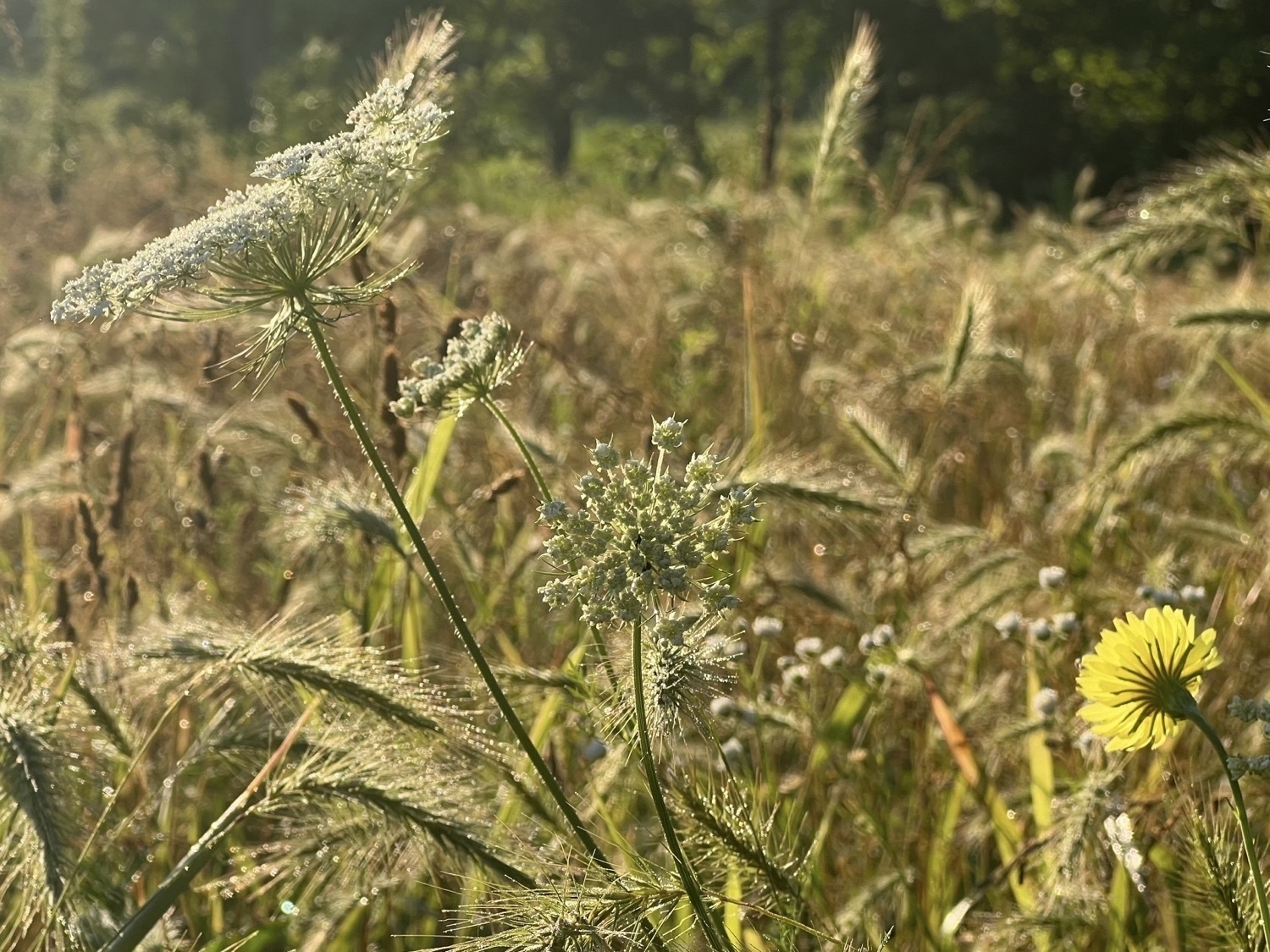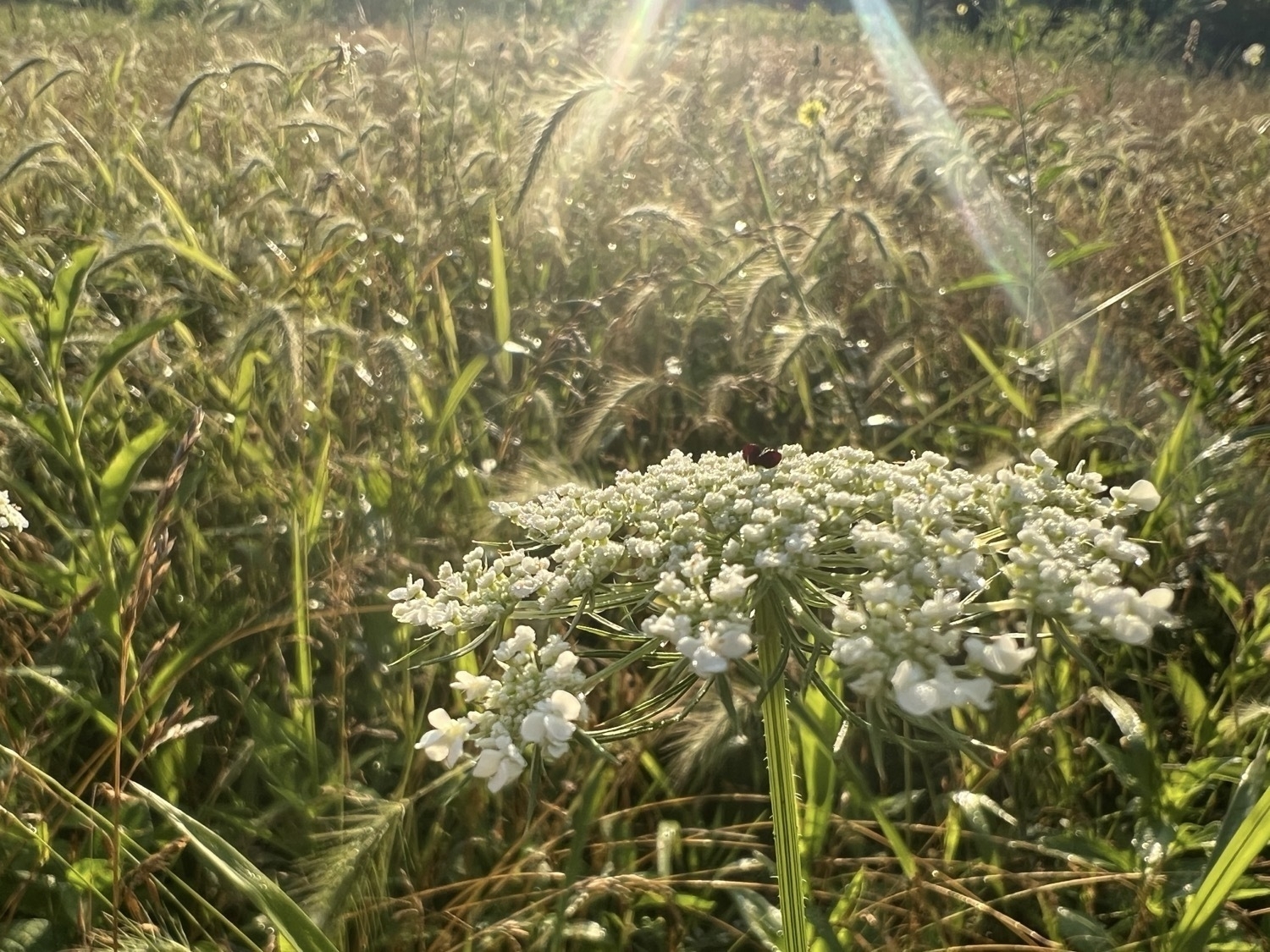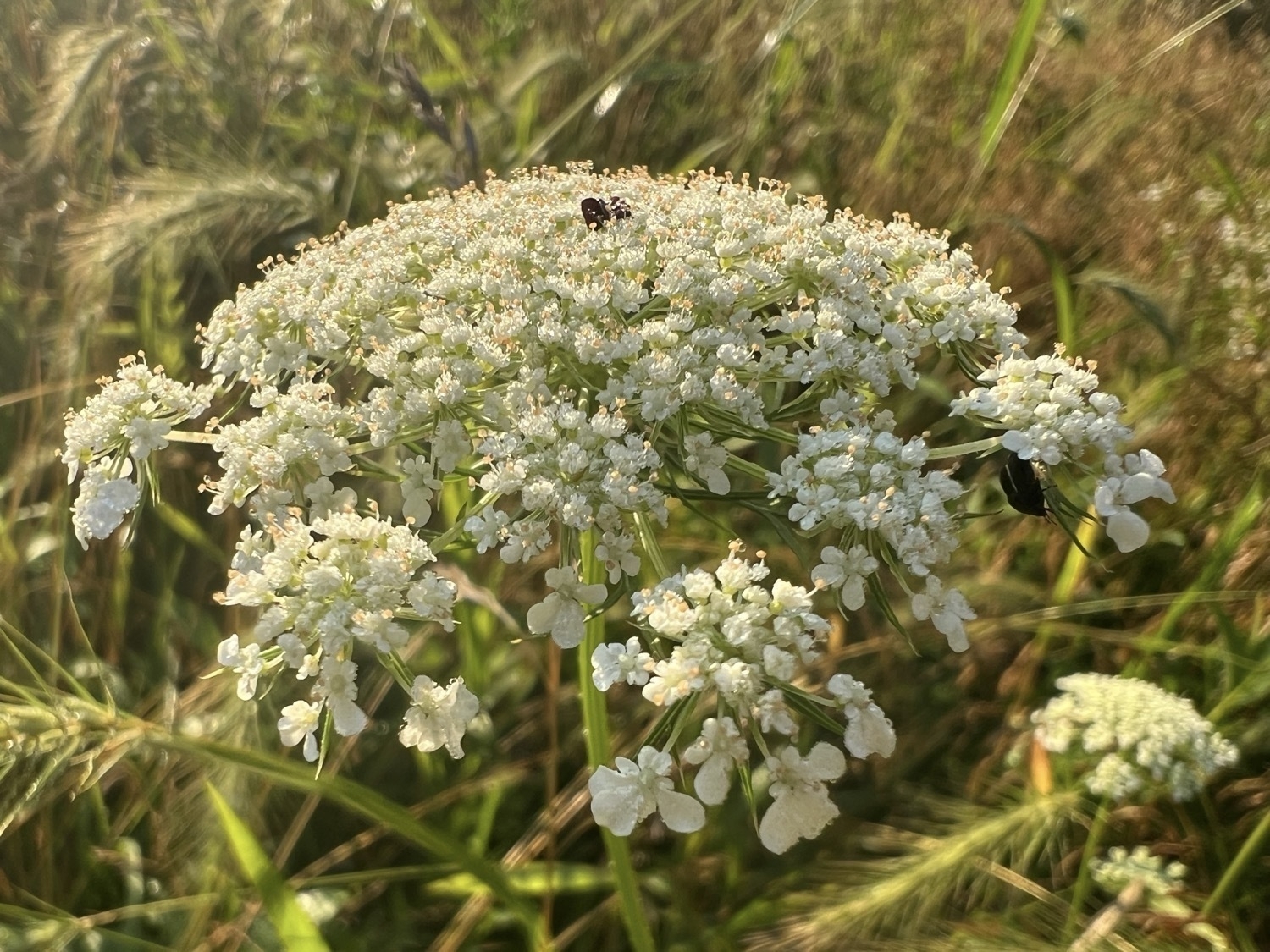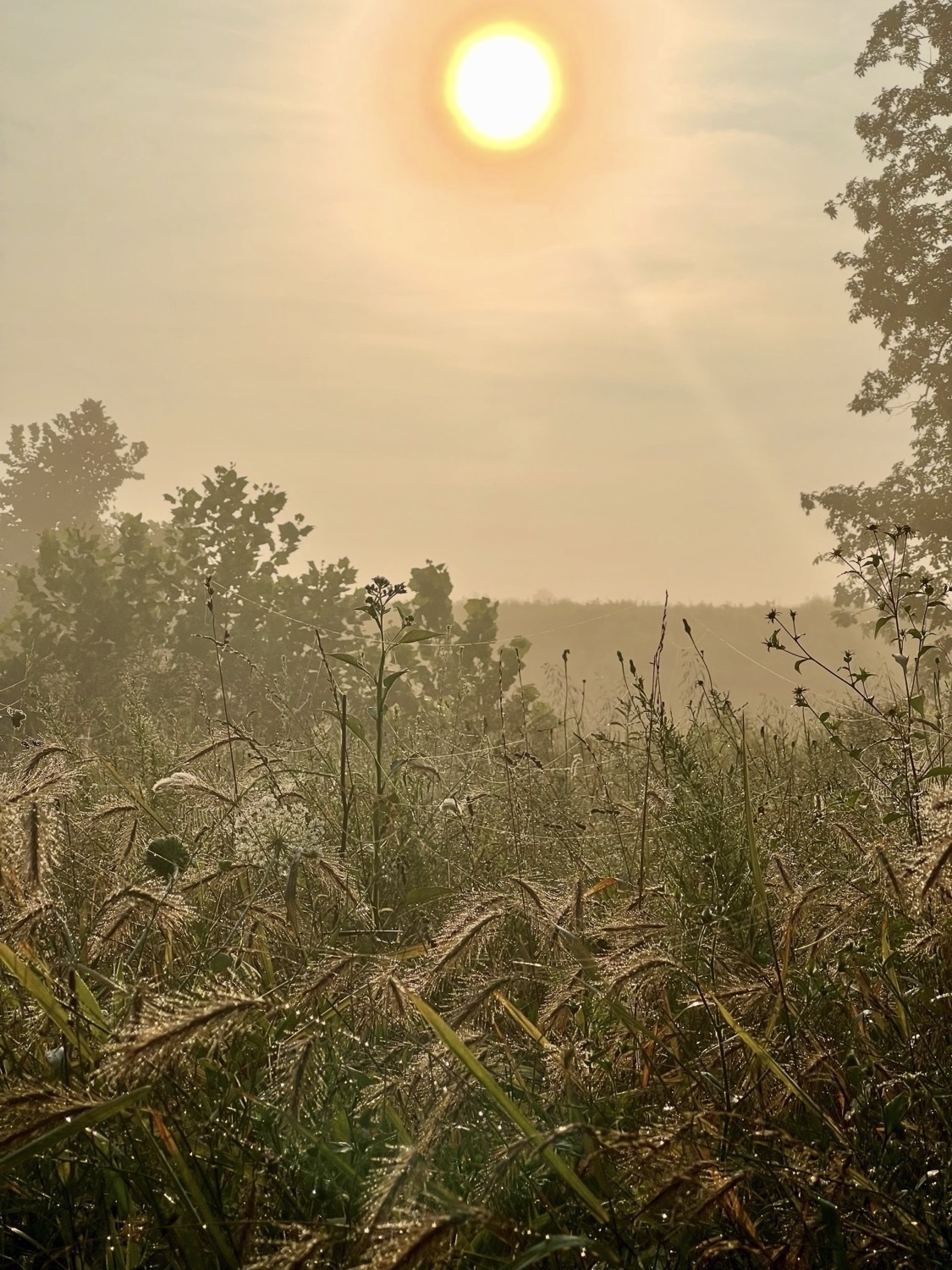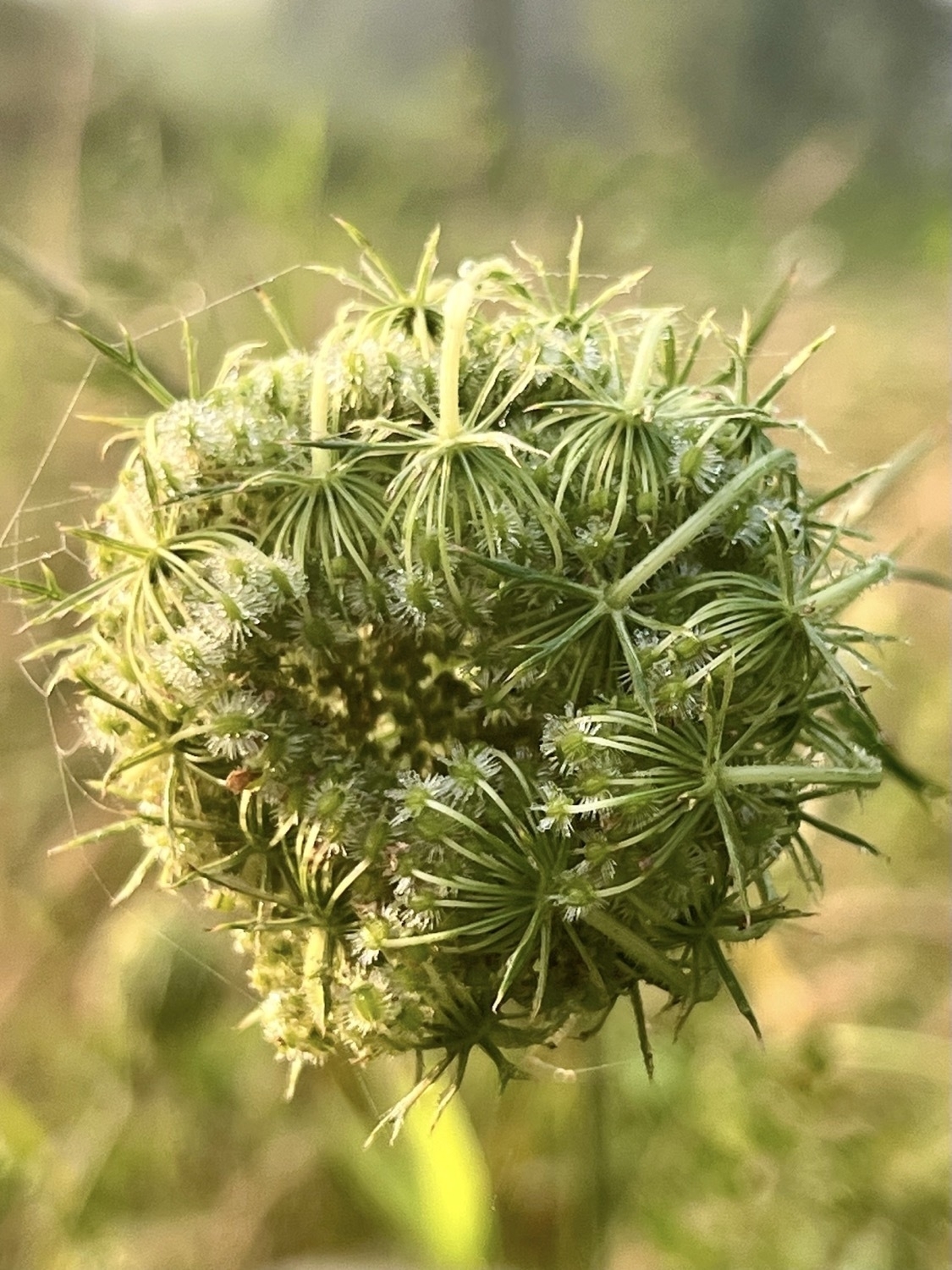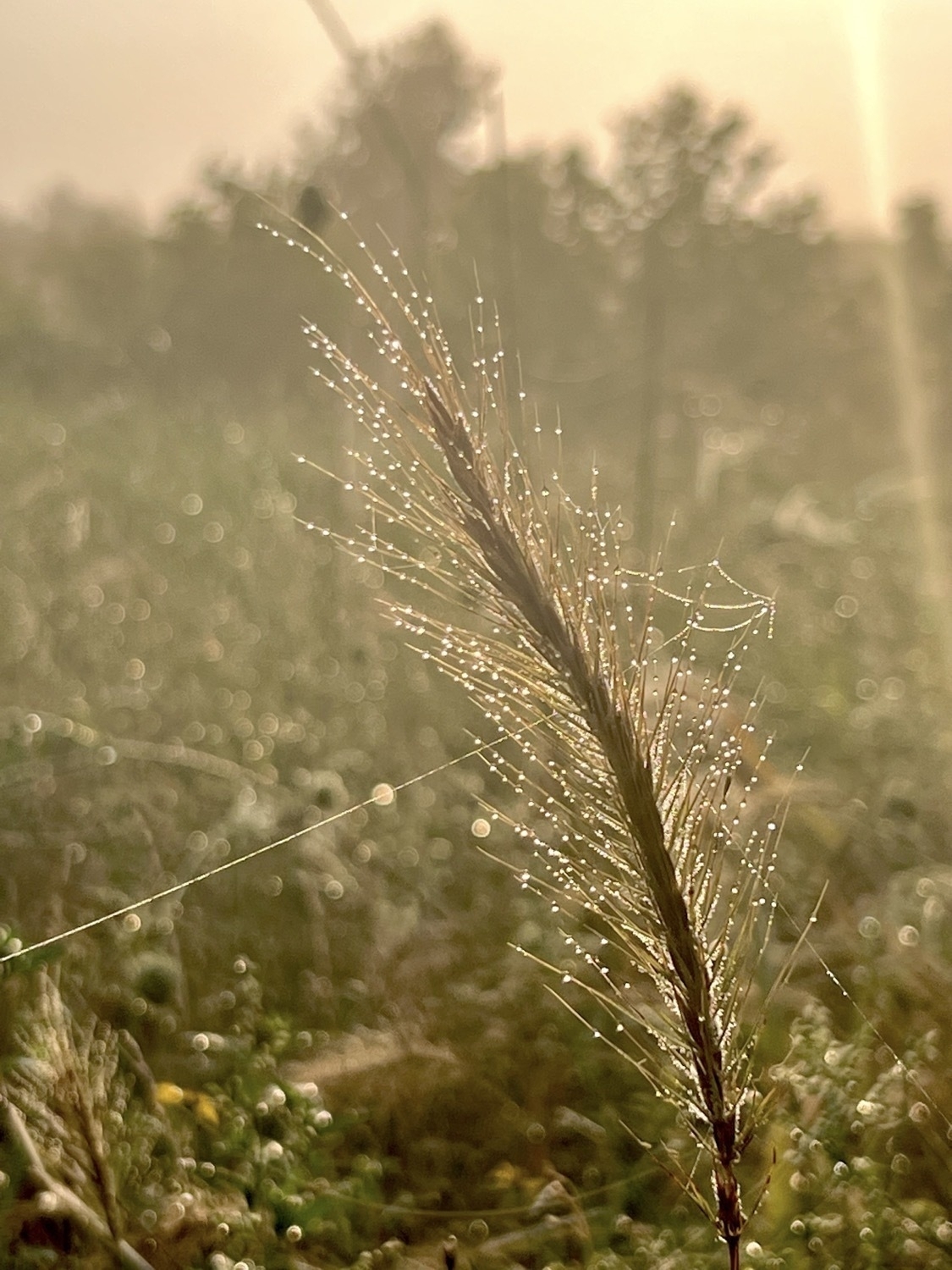Nature
Writing for The Conversation, microbiologist Jennifer DeBruyn describes how our microbiome lives on after after we die, becoming a “necrobiome” to recycle our human cells into new life.
I find a kind of deep comfort in knowing that my body is a community of organisms. It is a biological fact that affirms my feeling and understanding of connection to the life around me. It’s not just comfort I feel in knowing these things but a kind of deep connectedness. Biological life is a beautiful continuum. We, in our current human forms and consciousness, only get to glimpse the briefest of moments in that continuum.
From the article:
Each human body contains a complex community of trillions of microorganisms that are important for your health while you’re alive. These microbial symbionts help you digest food, produce essential vitamins, protect you from infection and serve many other critical functions. In turn, the microbes, which are mostly concentrated in your gut, get to live in a relatively stable, warm environment with a steady supply of food.
But what happens to these symbiotic allies after you die?
Well, they flourish of course! I don’t mean to spoil the article and you should read it for the details because it’s fascinating. And though it is an incredibly stinky process it’s fundamental to life, it is life. This is why I don’t fear the “dirt” around me. I don’t use antibacterial soaps or bathe nearly as often as most people and while I keep my tiny house tidy it’s not scrubbed clean. I generally trust that the microbial ecosystem that lives in and on my skin and the rest of my body is doing what needs to be done to keep a balance.
This is also why the land around my tiny cabin is less of a garden and more of a wild space. My porch and cabin is surrounded by river oats, a grass that grows three feet tall and might appear to be “weeds” to someone who hasn’t considered what’s meant to grow in this landscape. Intermixed with it are many other natives that are a food source to insects and other critters. My cabin and I are just one element of this landscape.
This is why I don’t fear or kill spiders or other “creepy crawlies” that I find in and around my cabin. I’m in the woods and I understand that though my cabin has four walls and a roof, the ecosystem includes my cabin. I regularly find spiders inside and I fully understand that they’re not there to do me harm. They’re there because there is food to be had in and around the cabin. I find comfort in their presence and embrace the role they play in our shared lives.
We humans often wage wars against each other and perhaps, without realizing it, we also seem intent on waging war against the planet of which we are a part. Rather than understand ourselves to be of nature we seek to separate ourselves from it. We plow it, pave at and otherwise view nature as that which must be subjugated. This is especially true of the over-developed nations of the Global North where we devote an inordinate amount of effort to seal ourselves off from the natural world.
In the end it is a battle we will always loose. Sure, we have science as a tool and we should use it to improve our quality of life. And I’m not suggesting we not have comfortable homes to live in. Or that we should avoid technology. But, rather, that we would be better off if we spent more time understanding ourselves as natural animals. Yes, we’re very good at creating adaptive technology and complex societies as a result, but in the end, we are complex biological organisms living in complex ecosystems. Our health and our lives would be improved were we to make more effort at understanding the healthy, natural and essential connections that sustain us.
Tiny Life Journal - Treating myself to a cup of iced sumac tea! Though, really, it’s very tart and tastes far closer to lemonade than tea.
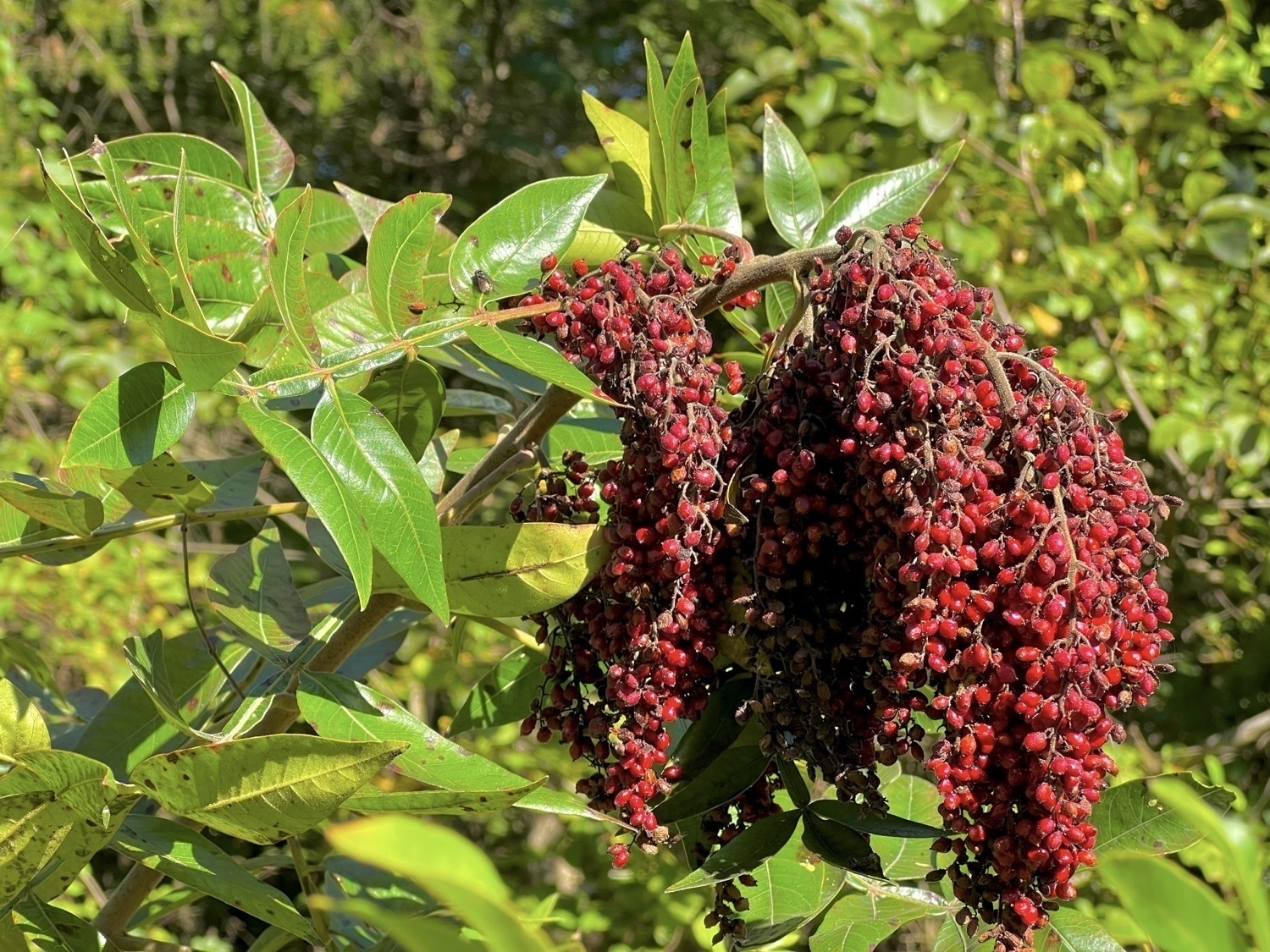
A fairly common small tree around rural Missouri and much of eastern North America, sumac produces large bunches of seedy red berries that hang from the branches by mid to late August. This particular species is Rhus copallinum commonly called winged sumac, shining sumac, dwarf sumac or flameleaf sumac.
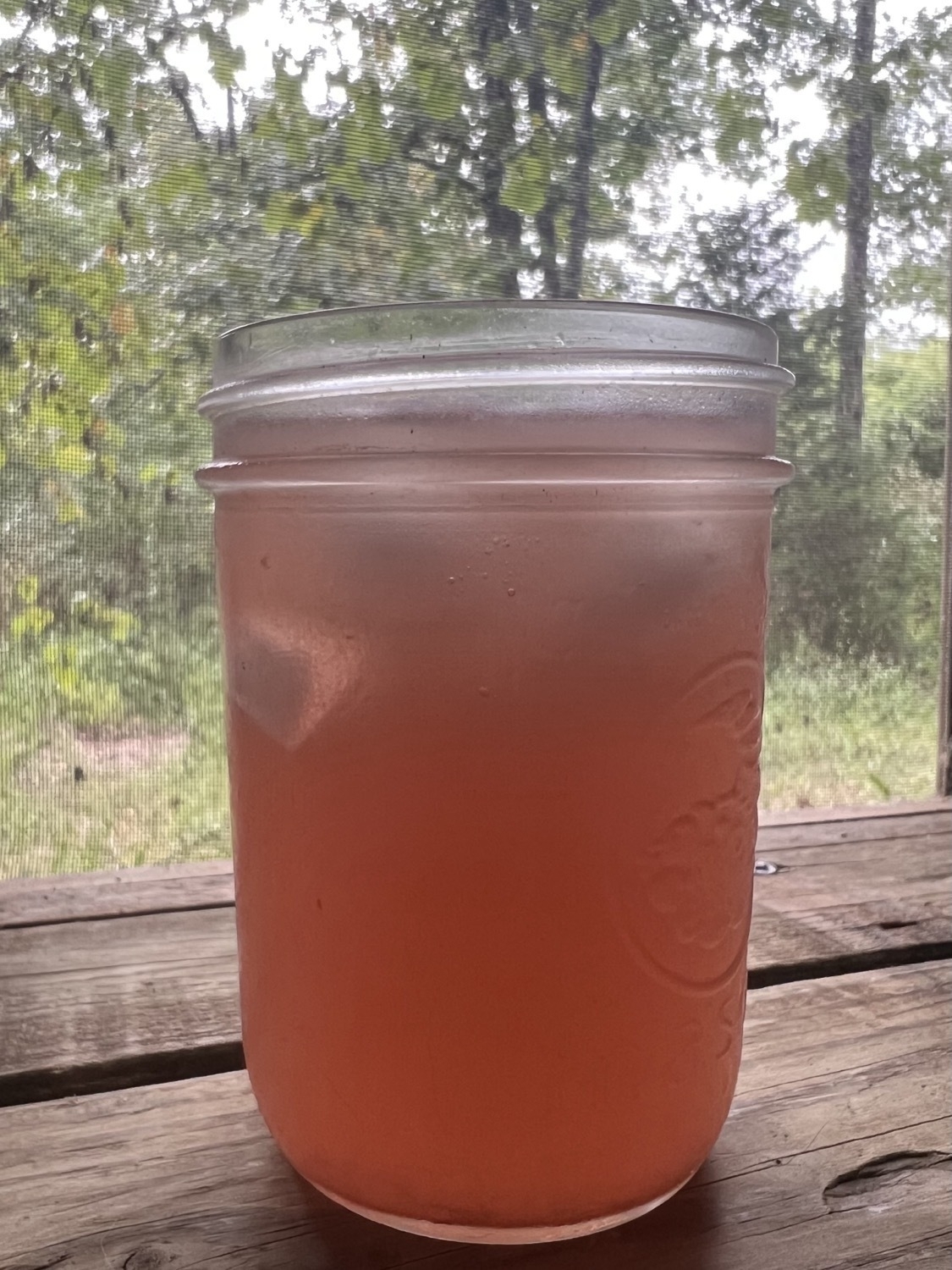
To make into tea just soak the berries in water overnight in a fridge. It’s better and more flavorful to mush the berries a bit or run the mix of berries and water through a blender for a couple seconds to release the juices. Use a filter of some sort to separate out the berry bits which will contain seeds that can be planted if one is so inclined. I’ve also read that the berries can be dried for use in winter though I’ve not yet tried that. I added 4 teaspoons of sugar to that portion.
Tiny Life Journal - I took a walk in the woods yesterday in search of pawpaws. I didn’t find any but I did come across a few Cardinal flowers in and near the dry creek bed. A nice surprise! I’d seen one several years ago in the area but not since.
What’s notable is that these flowers are a favorite food source of the ruby throated hummingbird which, while in flight and feeding, seem to resemble the flower. There are three lower petals that look like the tail of the bird, two petals each stretched upwards and sidways from the center that look like wings. The central pistil looks like the body and head of the bird. If you’ve ever seen a hummingbird feeding you may note the similarity when viewing the flower from the front or side.
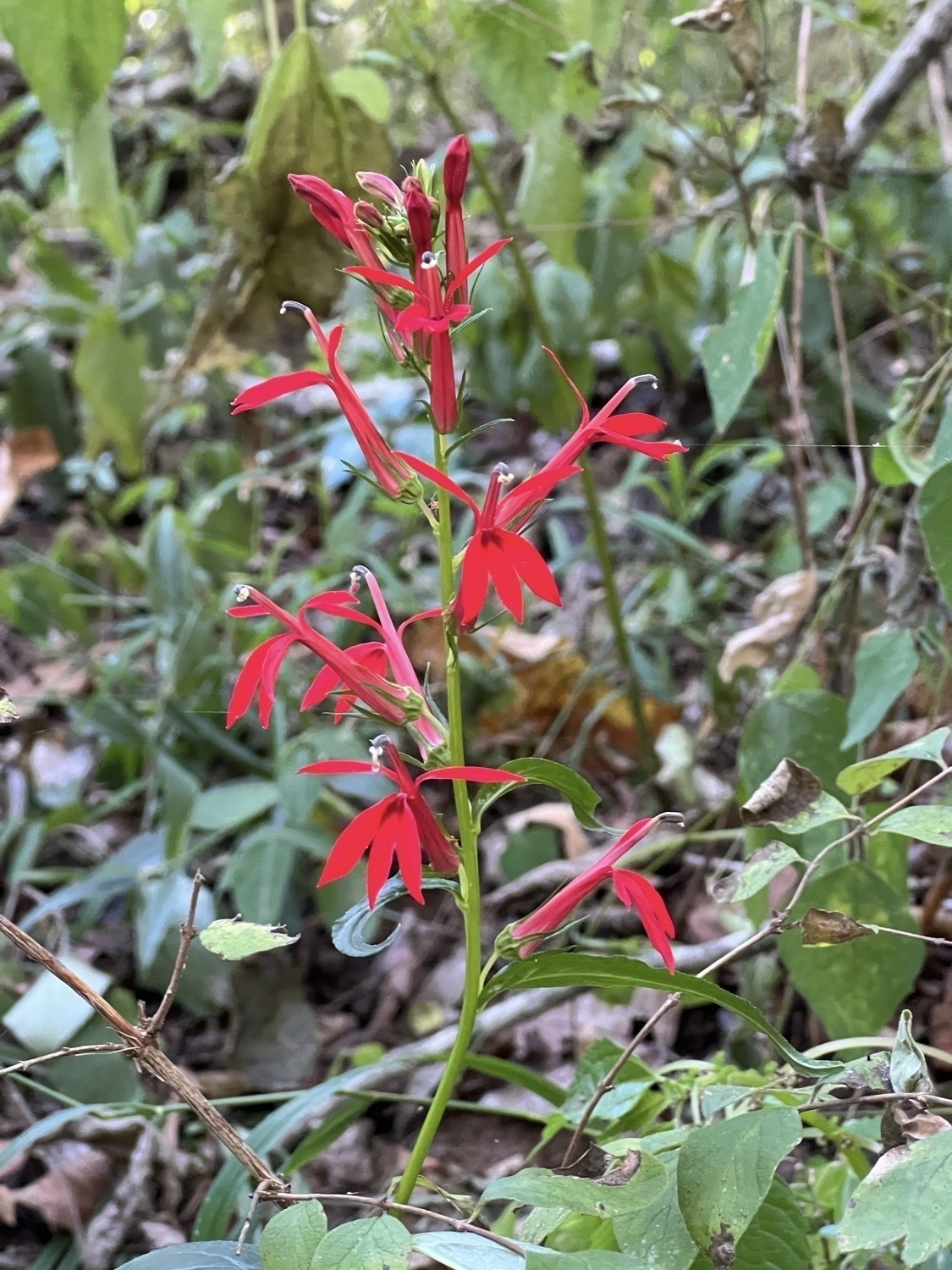
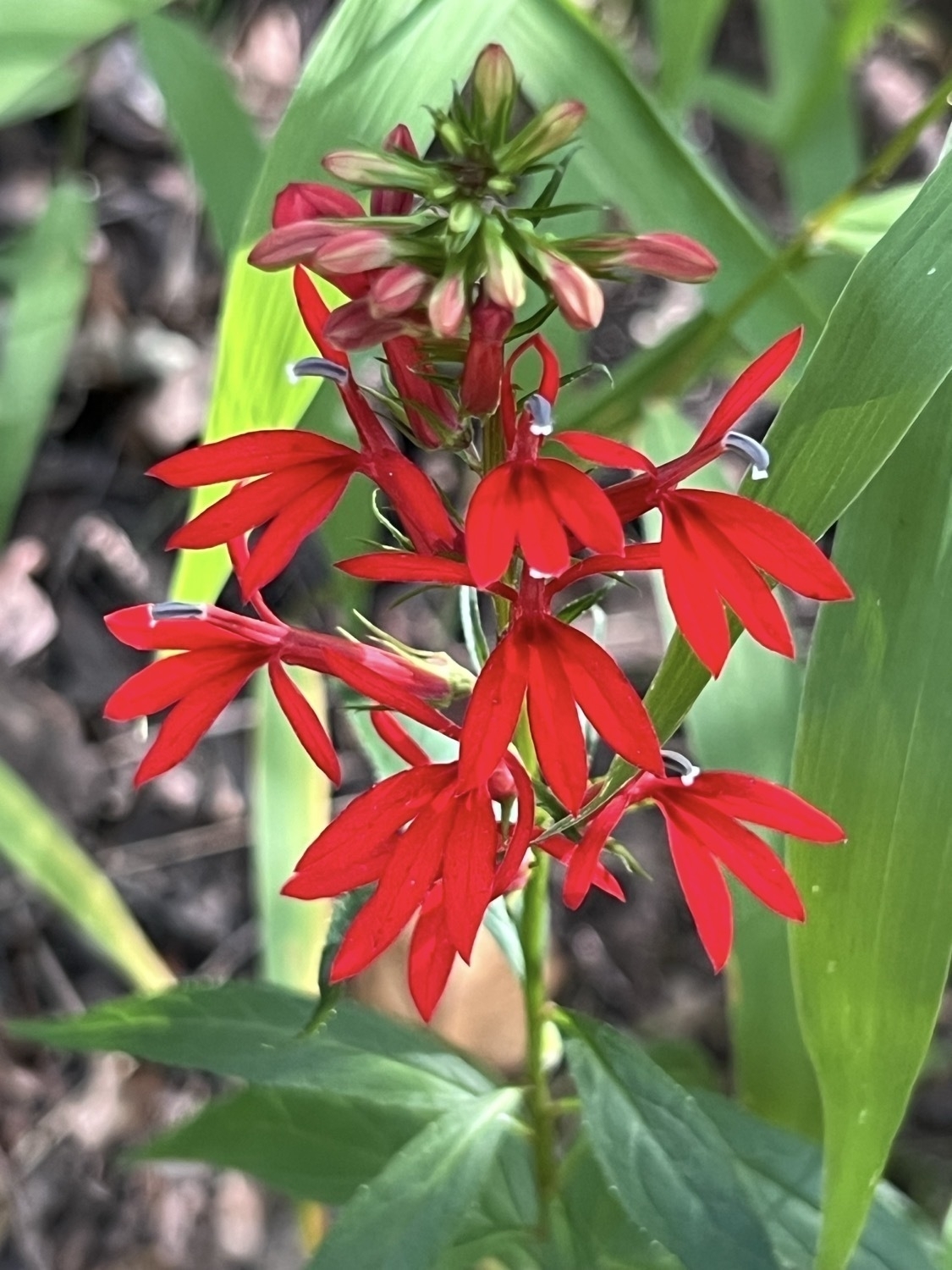
Tiny Life Journal - While on a bike ride back in June I noticed that there were paw paw trees growing along the road. I have no idea why I’d not noticed them before. They were right there! In any case, I kept a lookout for flowers and fruit. I didn’t see any flowers but finally spotted a few fruit recently.
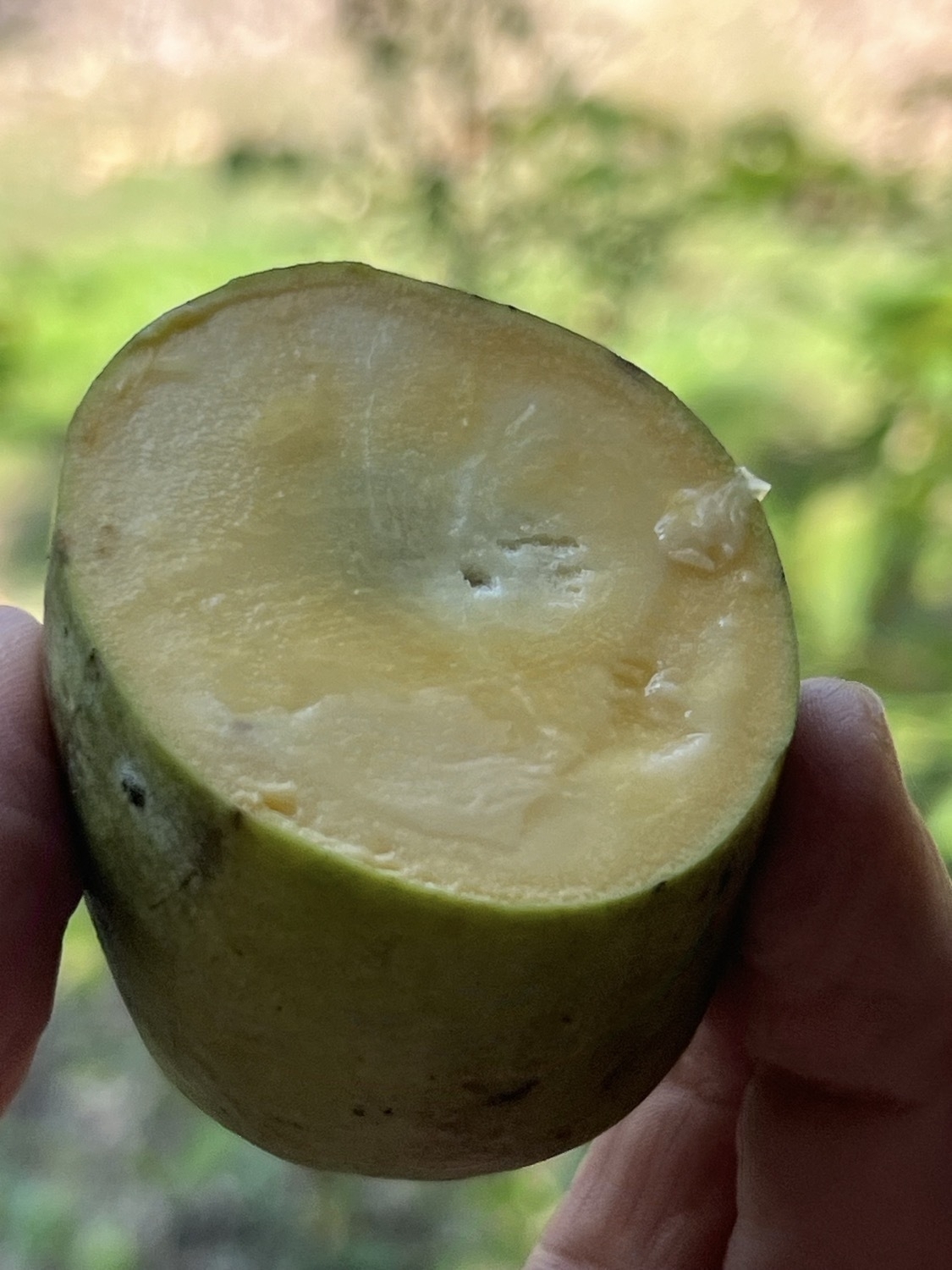
I harvested one a several days ago and I ate it yesterday. Oh my was it delicious. If you’ve never had one, it’s similar to a banana and mango combined, both in consistency and flavor. Also, it’s native to much of North America and is the largest native fruit. That said, they’re hard to come by. They’re usually not sold in stores so you’re most likely to only get the chance if you grow them, discover them or know someone that has them.
You can buy the trees from some mail-order nurseries. I’ve got a couple that I planted from a nursery and not long after I discovered a patch of them that recently started growing just hundreds of feet from my cabin. They’re probably less than 3 years old. The seeds are very large, not wind born so I’m guessing they were transported in via some animal’s poop. Most certainly there are others in the nearby woods I’ve not yet found. I went in search a couple weeks ago and was, not surprisingly, rewarded with a leg full of seed ticks for the effort. No paw paws though.
For now I’ll enjoy the fact that I’ve got a handful growing, I’ve got some seeds and I know there are a few more fruit nearby waiting to be harvested. That’ll have to do.
Tiny Life Journal - A view of the countryside from my morning ride. The mix of fields and forests over the gentle rolling hills of Madison County never disappoint. Not in the image, an immature (2-3 years old) bald eagle seen in a nearby field.

Tiny Life Journal - I’ve been seeing these two sweeties several times a week while taking my morning walk. Always in the same spot and same time.
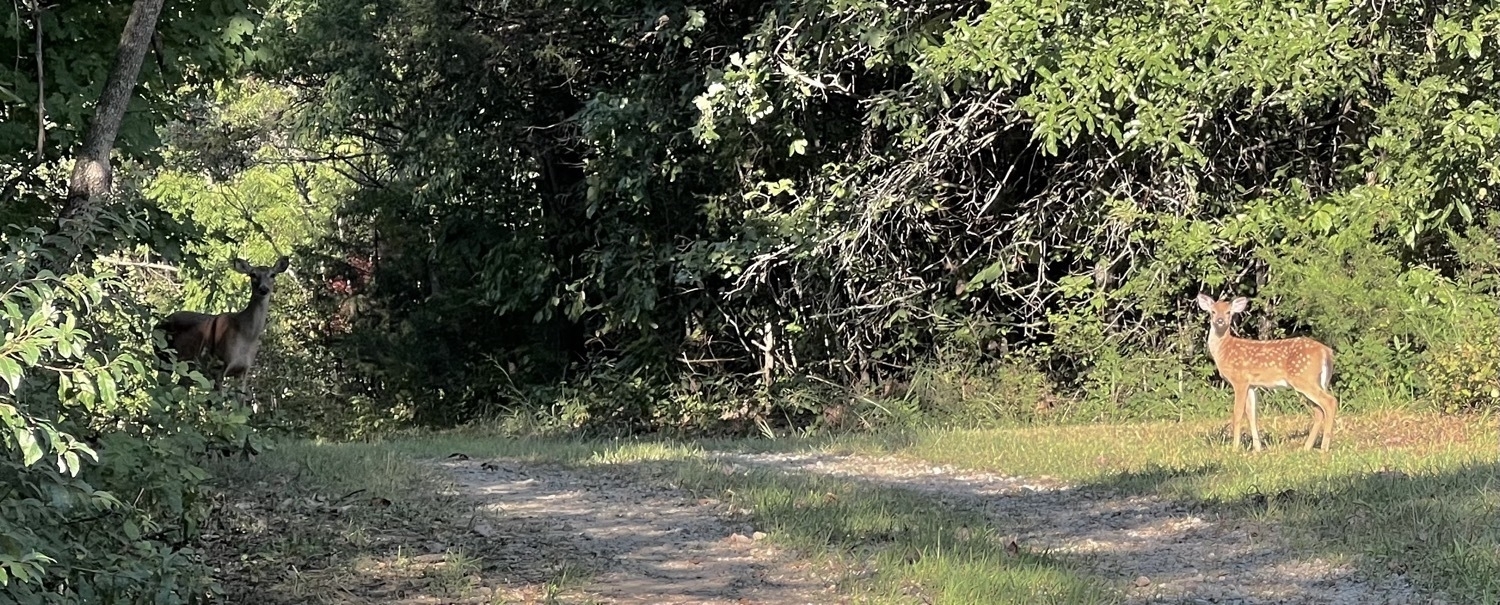
Tiny Life Journal - Well, file this under a stroke of good luck and the benefits of paying attention. I stepped outside to take Cosmo on a little walk and I heard a Yellow-billed Cuckoo not too far off. It was answered by another just above me. I looked up just as the closer bird flew onto a branch 60 feet above. The second arrived moments later and I believe I observed mating as the second landed on top of the first and from my vantage point below their two bodies seemed to mostly merge with the exception of their two tails which were cris-crossed. I’m 55 years old and only just today have I seen two birds mate in a tree.
Then it occurred to me that it might be a bit late in the season for that. They’ll soon be migrating thousands of miles from North America to South America. But according to All About Birds Yellow-billed Cuckoos have one of the shortest nesting cycles of any bird species.
From the start of incubation to fledging can take as little as 17 days. Although born naked, the young birds develop quickly; within a week of hatching the chicks are fully feathered and ready to leave the nest.
Imagine, they hatch and grow and then within a few weeks embark on such a long journey!
Popped up on the photo widget on my iPad, a pretty bit of lichen and moss photographed 15 years ago. The photos widget is such a great feature.
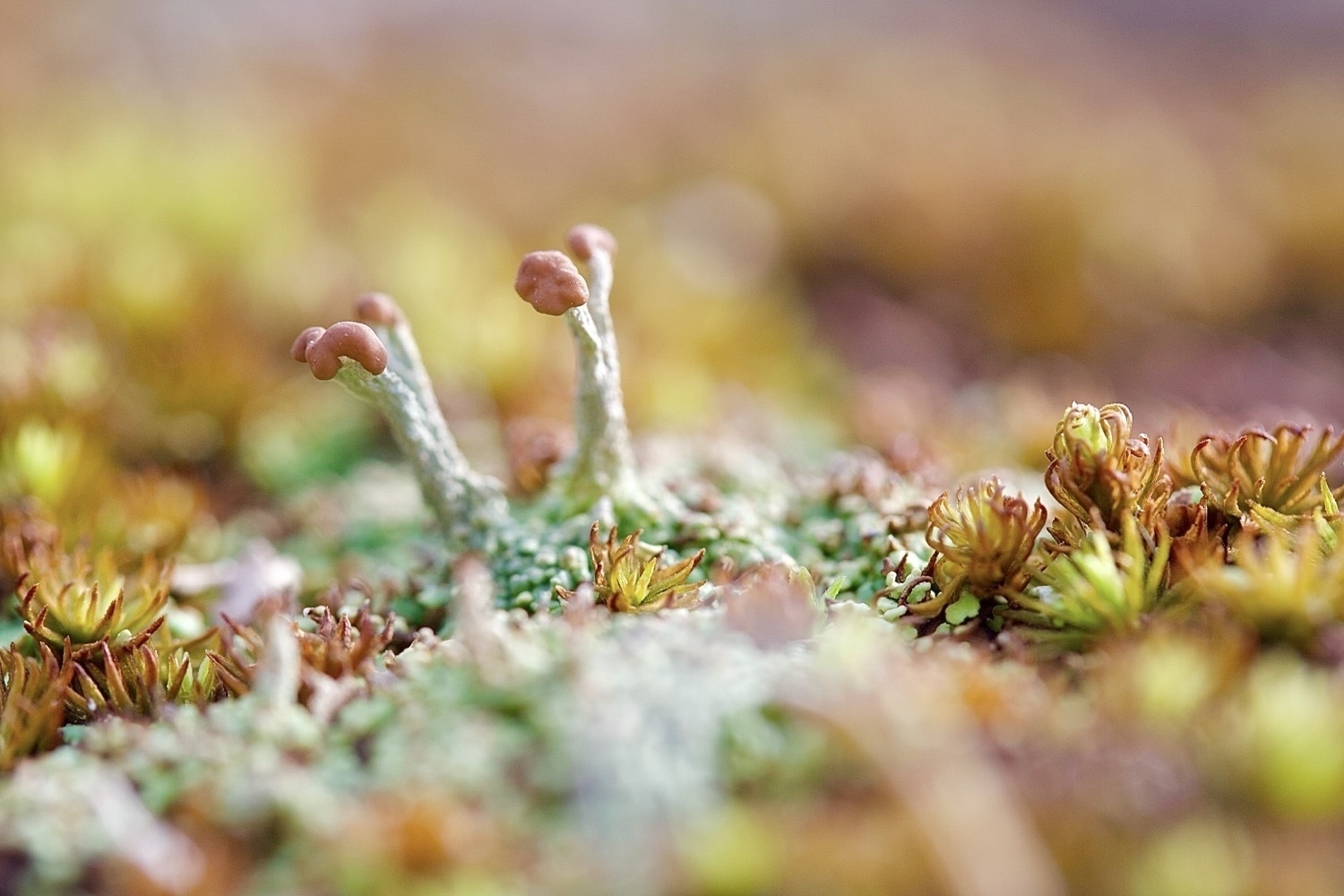
Tiny Life Journal - Missouri has been spared much of this summers' heat but last week was hot and humid here (90s with humidity at 90%+) so I used the window AC in my tiny house. But this morning at 5am it’s 69°. Had I paid attention to the forecast I would have opened my windows last night. A missed opportunity.
To conserve energy I usually turn the AC off at night and just run fans so it warms up a good bit. It was 80° in here this morning. A bit stuffy but tolerable. I stepped outside to heat some water for coffee and was met by the more humid but much cooler outside air. And of course, the birdsong. There’s nothing quite as cheerful as birds singing in the morning. Good morning birds!And off in the distance the occasional twang of frogs around the lake.
I’ve taken the opportunity to open my windows and turn the window fan on to freshen the air up and cool the cabin down without the AC.
Cool morning air and coffee in the company of bird song and frog conversation is a good morning.
I just felt a sting on my arm and looked down to see this little critter, smaller than a dime. I’d guess 10 mm. Left an easy to see bite and quickly swelling welt!
Zelus luridus, also known as the pale green assassin bug, is a species of assassin bug native to North America.
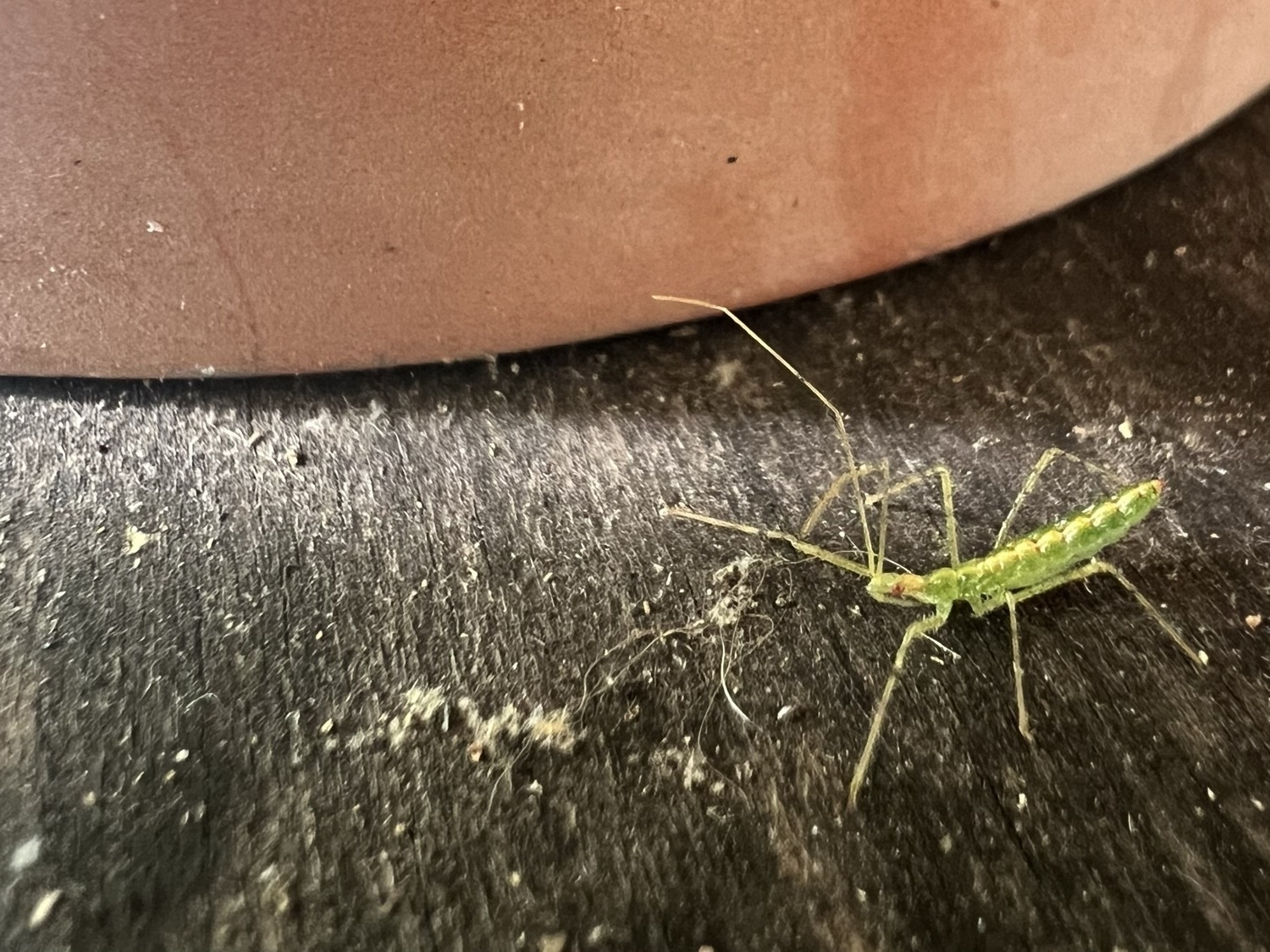
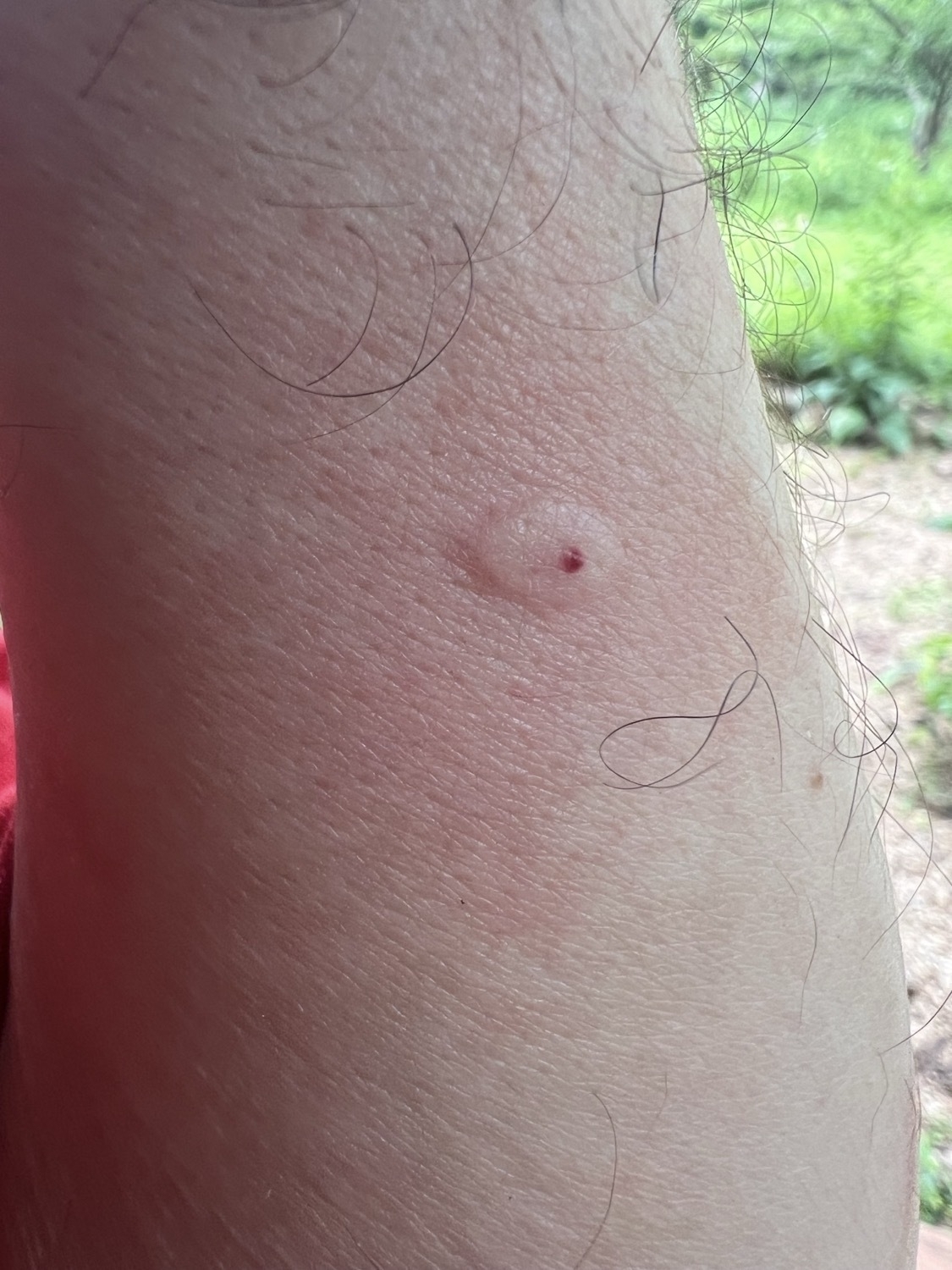
Tiny Life Journal - On my morning walk with Cosmo I stopped to enjoy the smell of a button bush and noticed a little Flower Crab Spider perched on one of the spheres of flower clusters tucked under a leaf. A lone bindweed flower softly lit by from behind was also worth a stop!
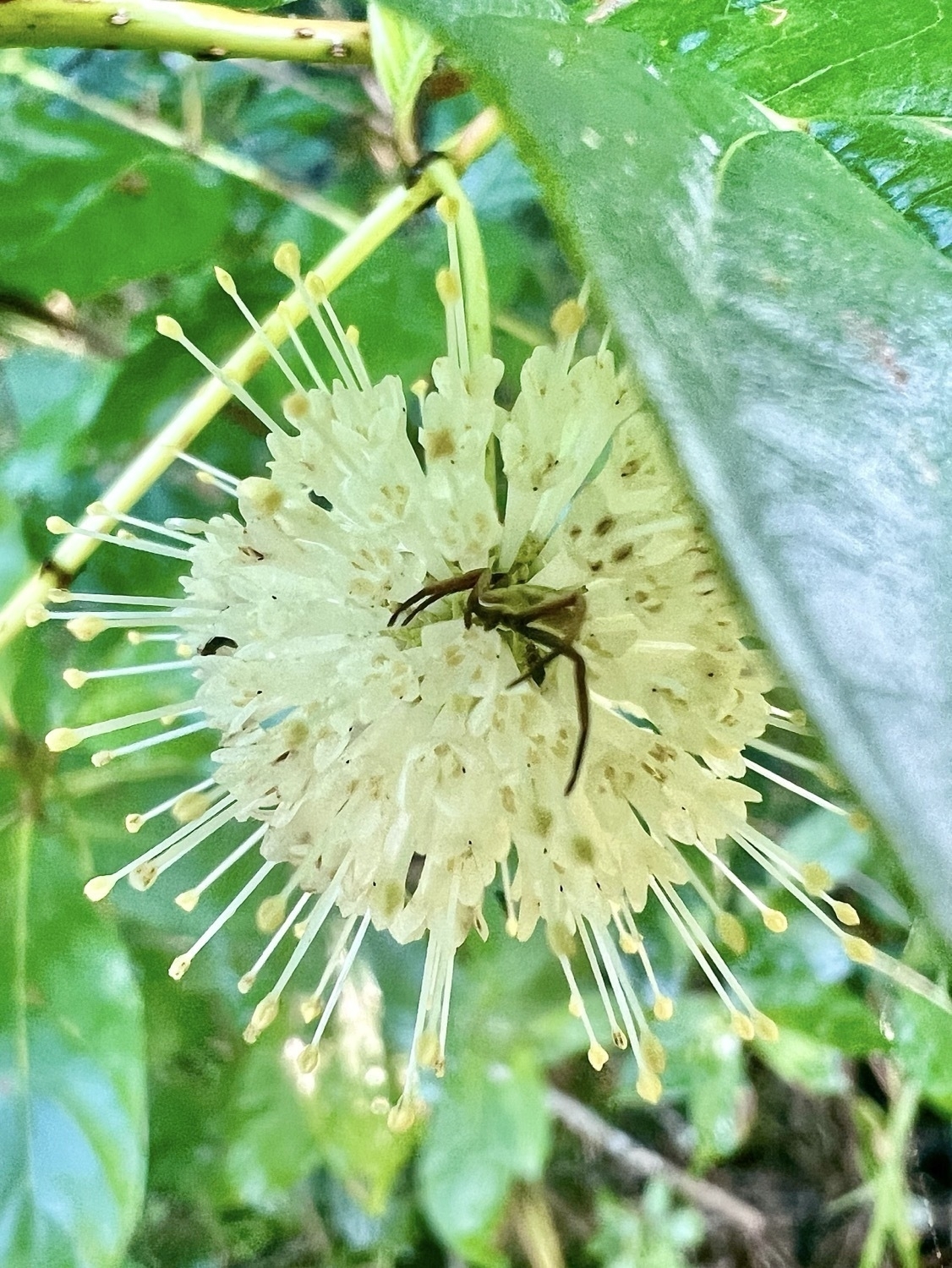
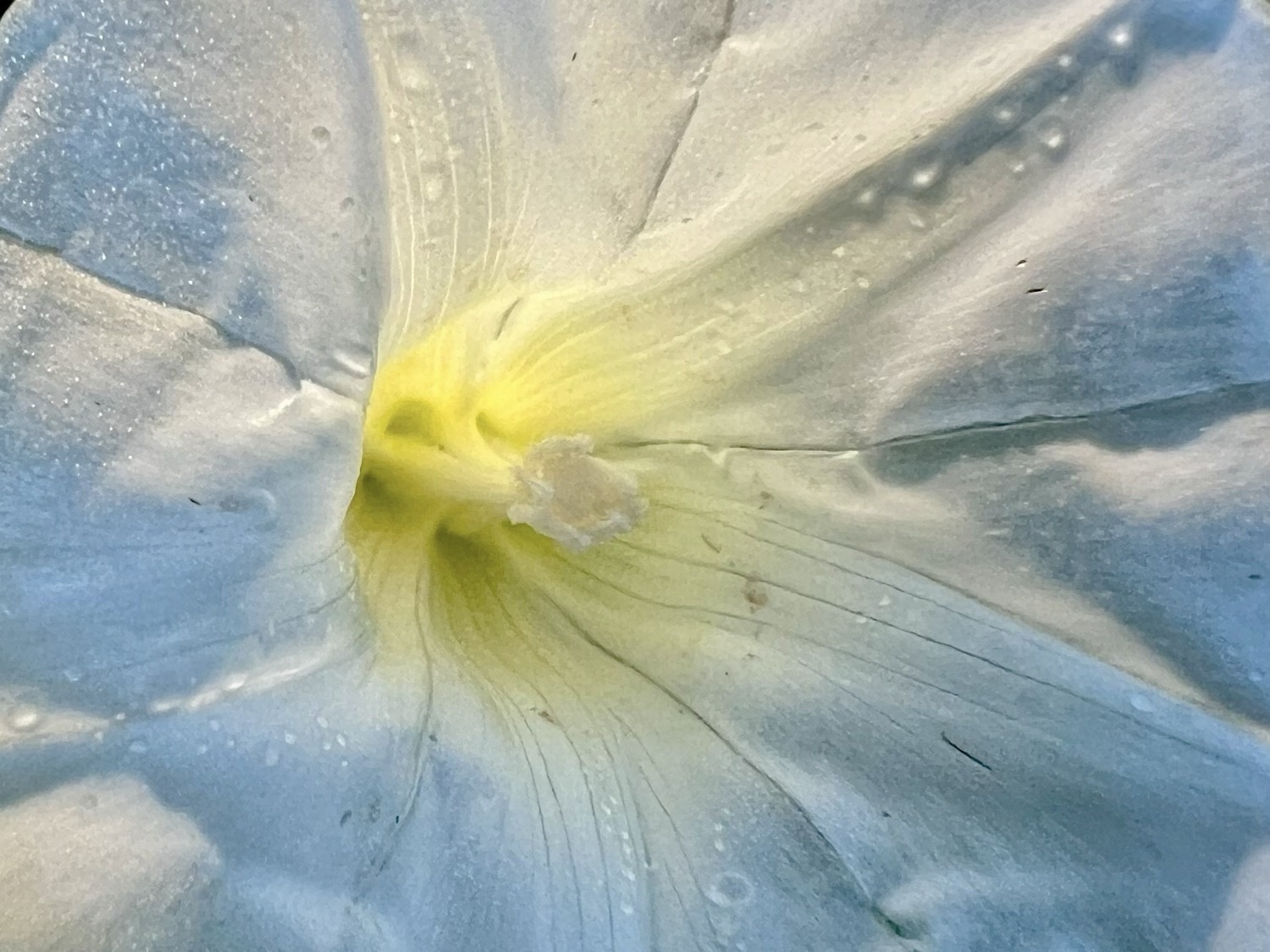
Tiny Life Journal - My mornings start with a dog walk followed by a 30 minute bike ride and, finally outdoor chores. Lately those chores start with picking blackberries. A beautiful view of the nearby Missouri countryside then, while picking blackberries I met a female widow skimmer dragonfly that was sunning itself.
The widow skimmer is one of the group of dragonflies known as king skimmers. The nymphs live in the water, molting and growing until they are ready to emerge from the water and then molting a final time to reveal their wings.
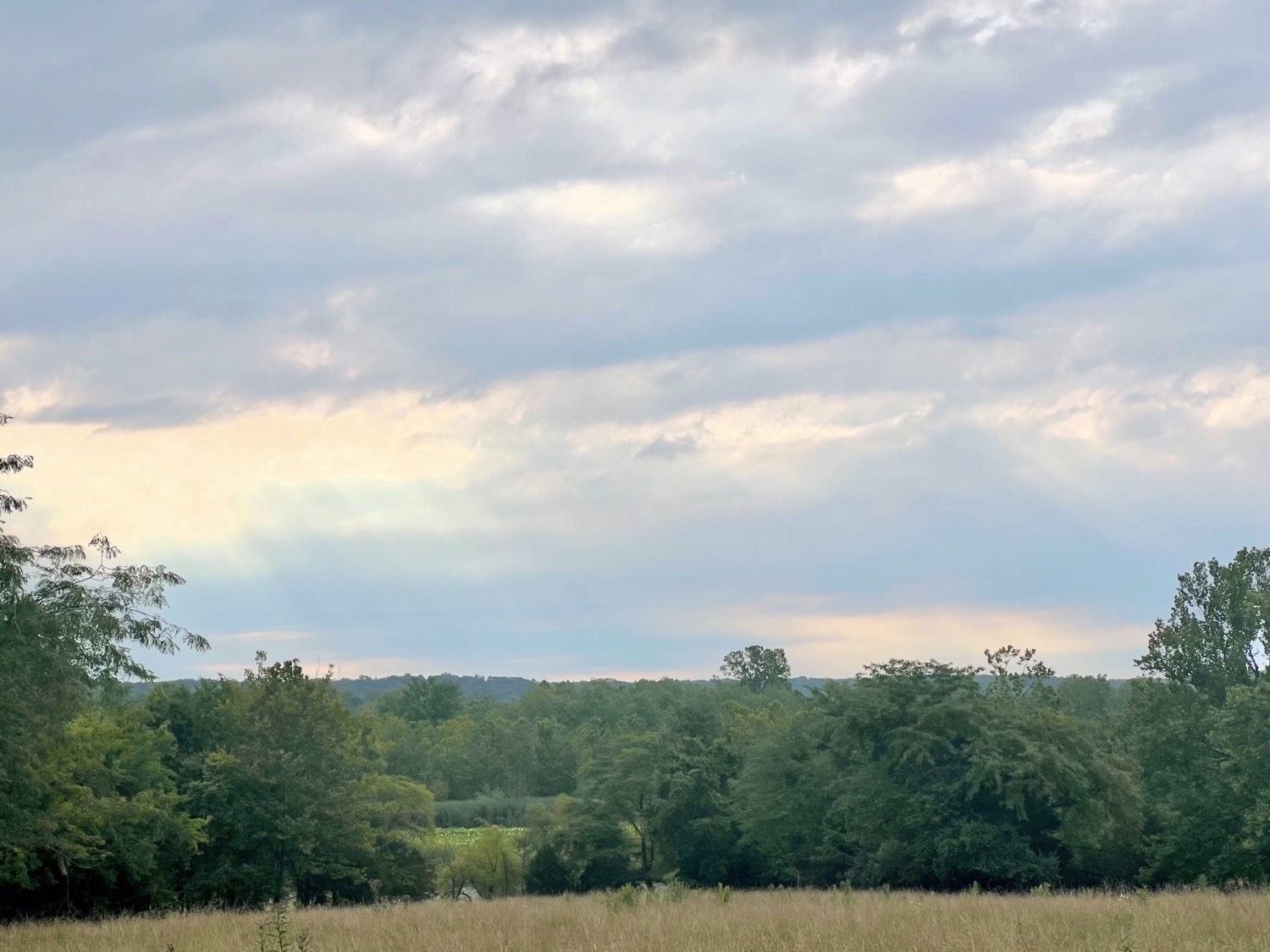
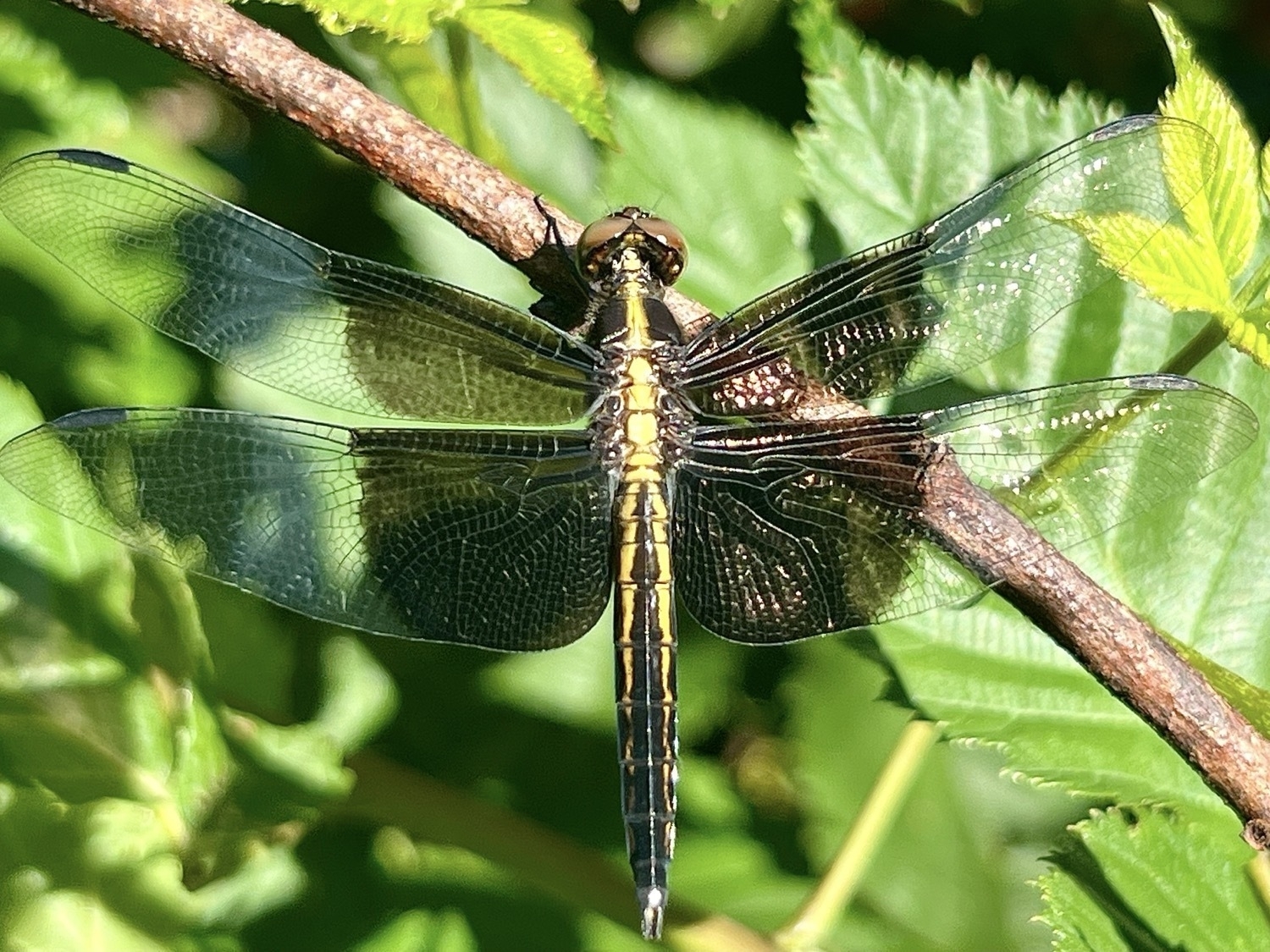

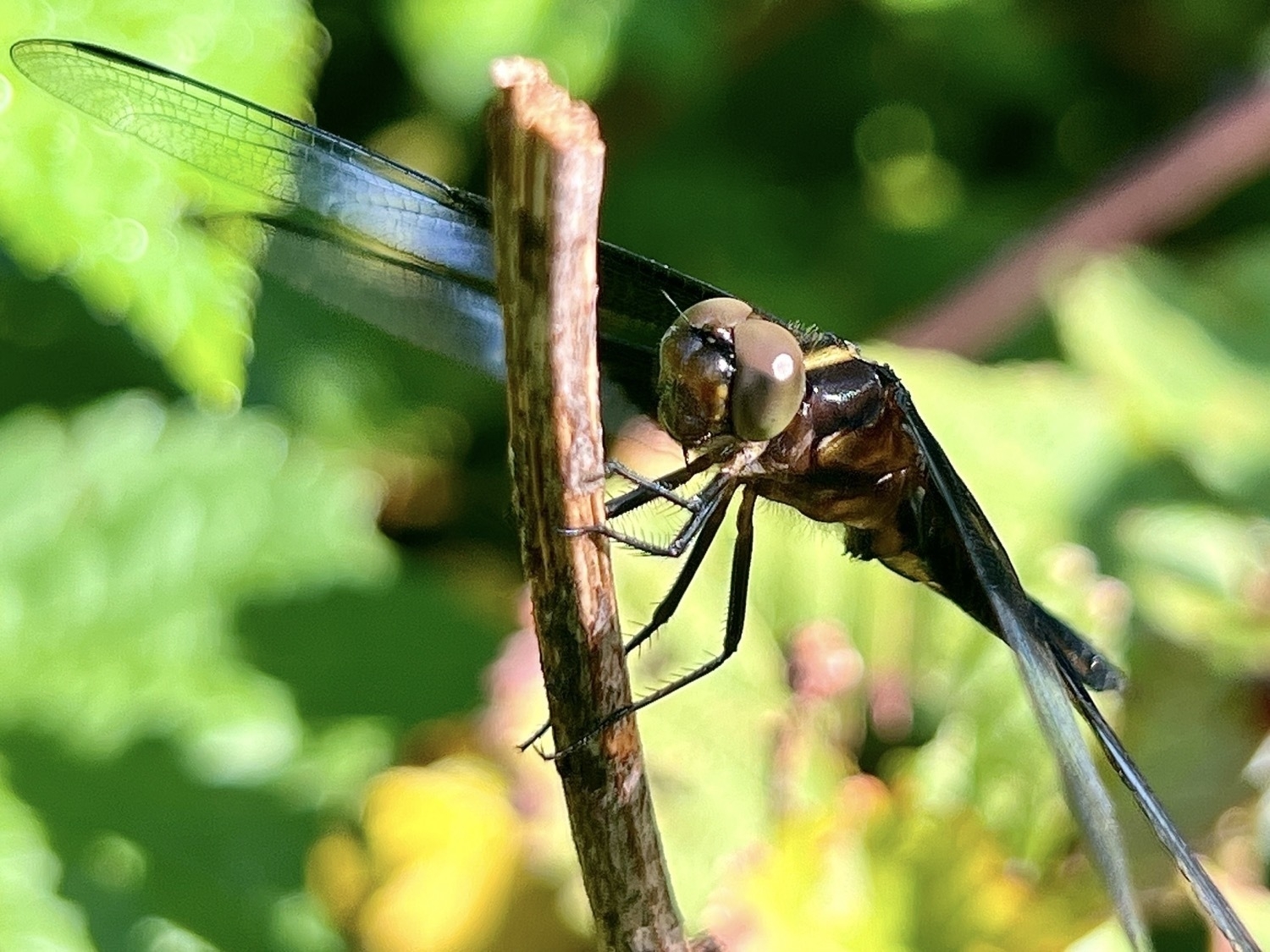
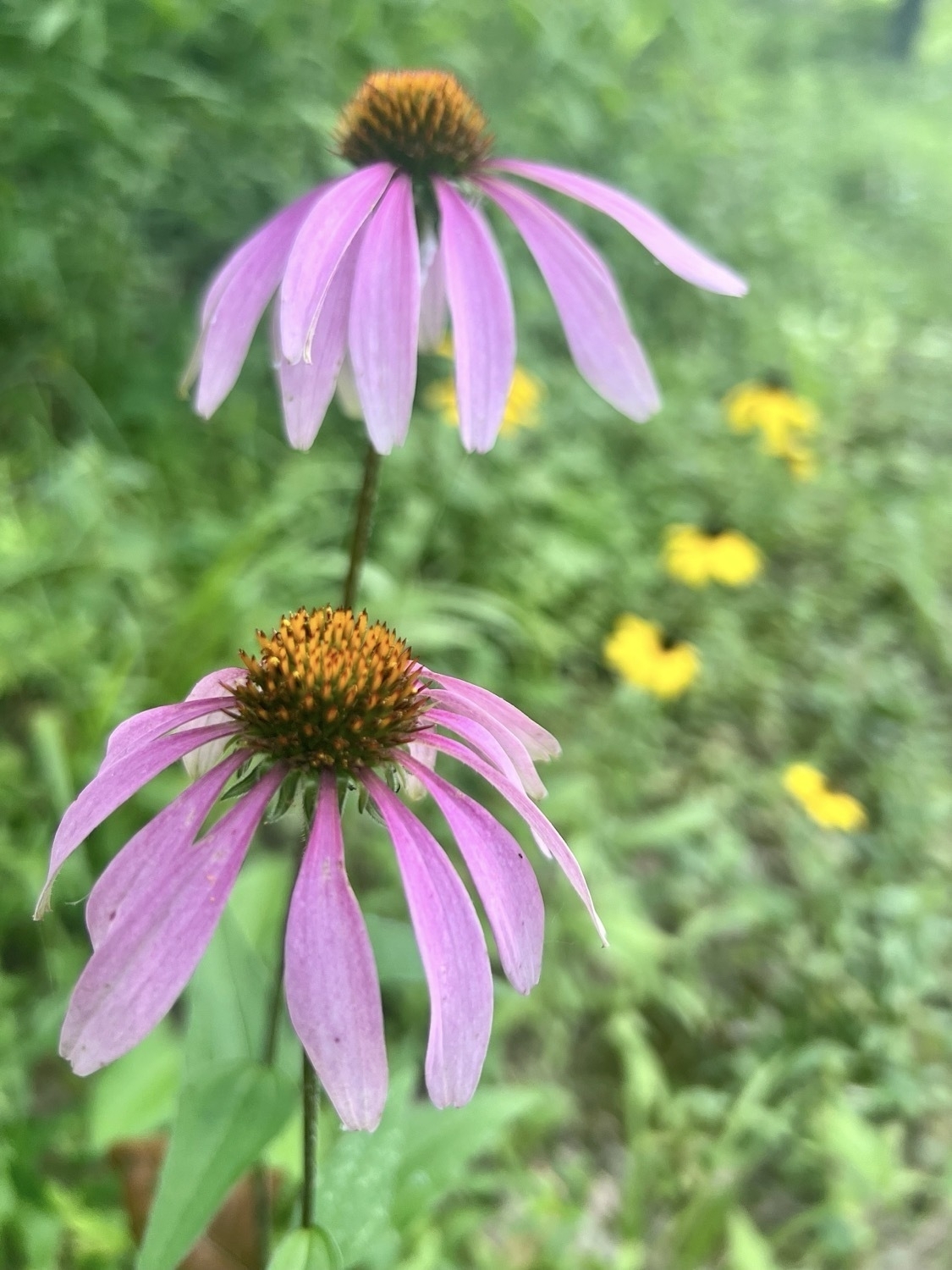


Tiny Life Journal - In my woodland garden, two of my favorite native wildflowers: Purple Coneflower and Black-Eyed Susan. Growing nearby, the American hog peanut which has edible seeds I hope to try this year.

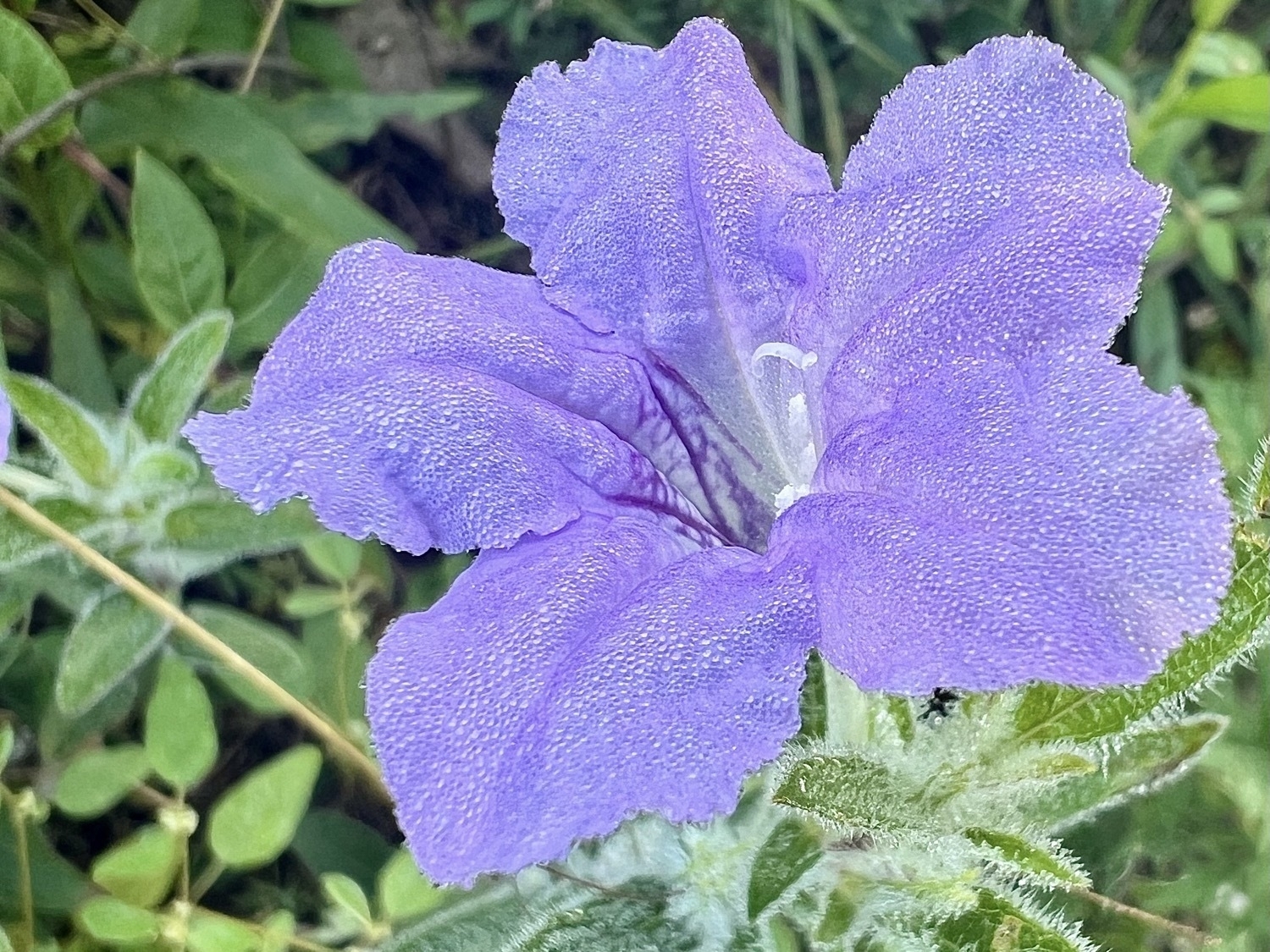
Tiny Life Journal - A morning dog walk is the start of my day. One mile on a gravel road that takes me through a mixed ecosystem of woodland, open fields and small meadows. A visual and aural mix of birds, butterflies, flowers and more. It’s simple, quiet and beautiful.
Tiny Life Journal - On a short evening walk with Cosmo we passed by this very small, delicate flower, Iris domestica, commonly called leopard lily or blackberry lily. Also making an appearance, Misumenoides formosipes, white banded crab spider.
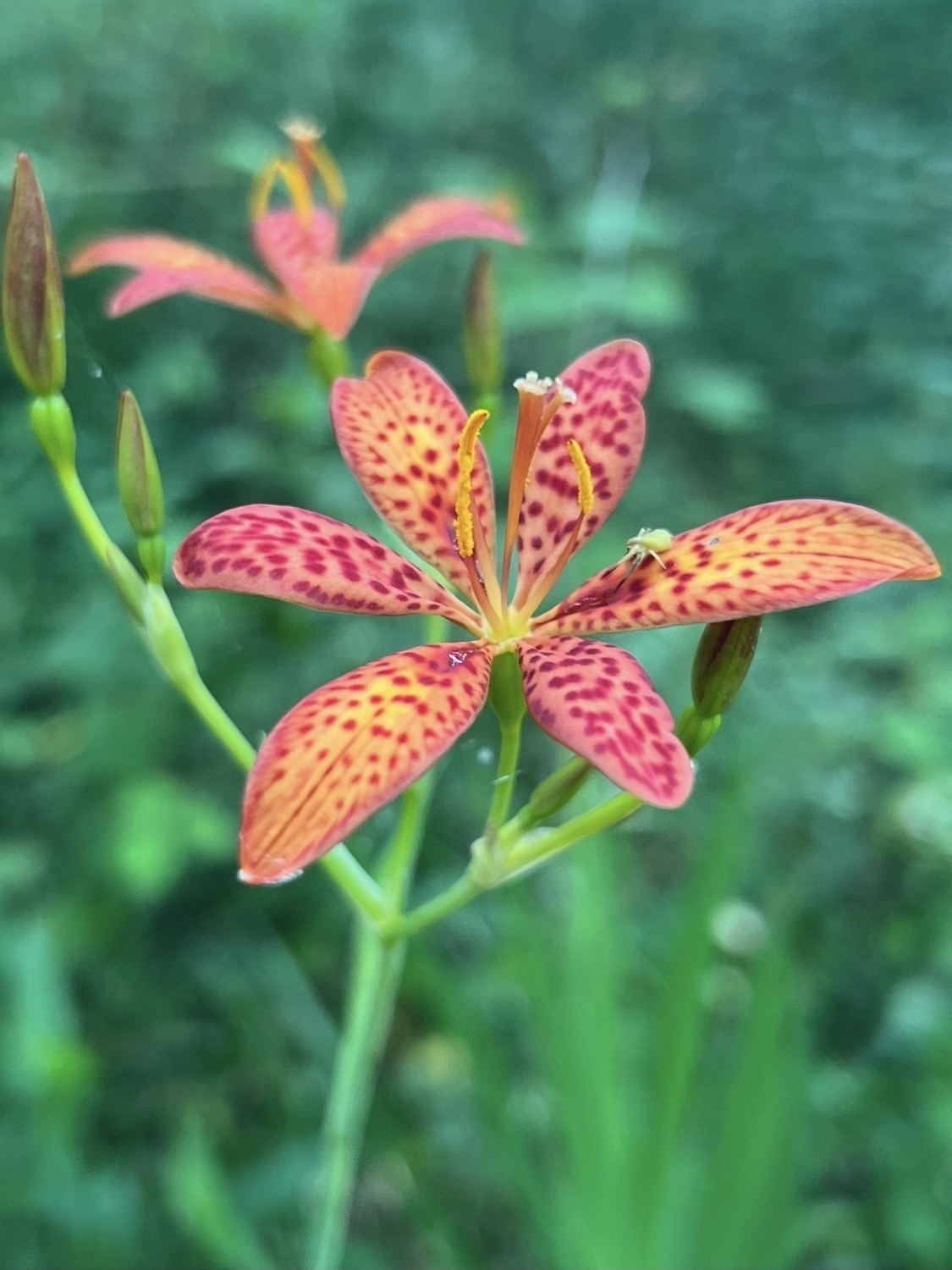
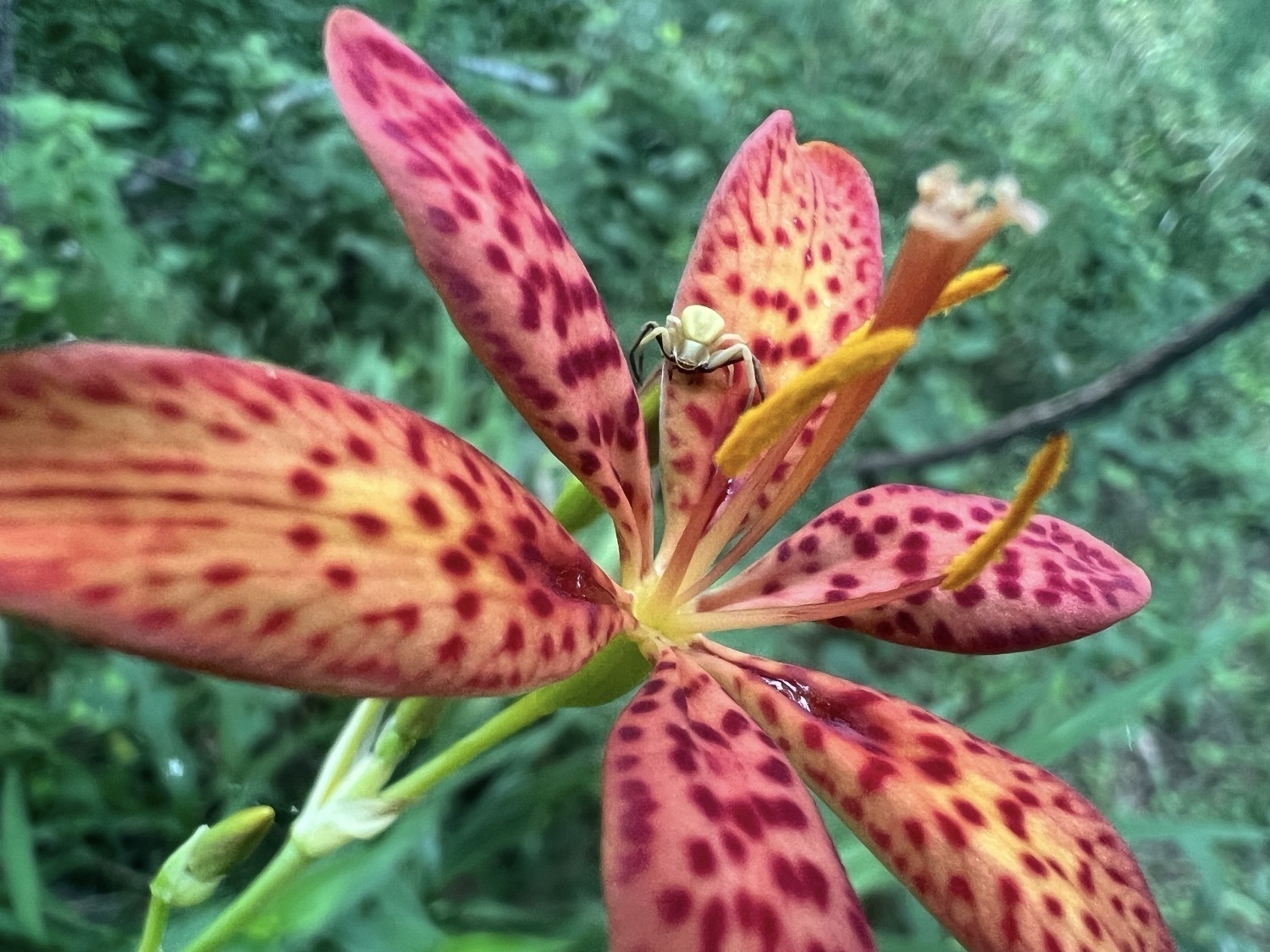
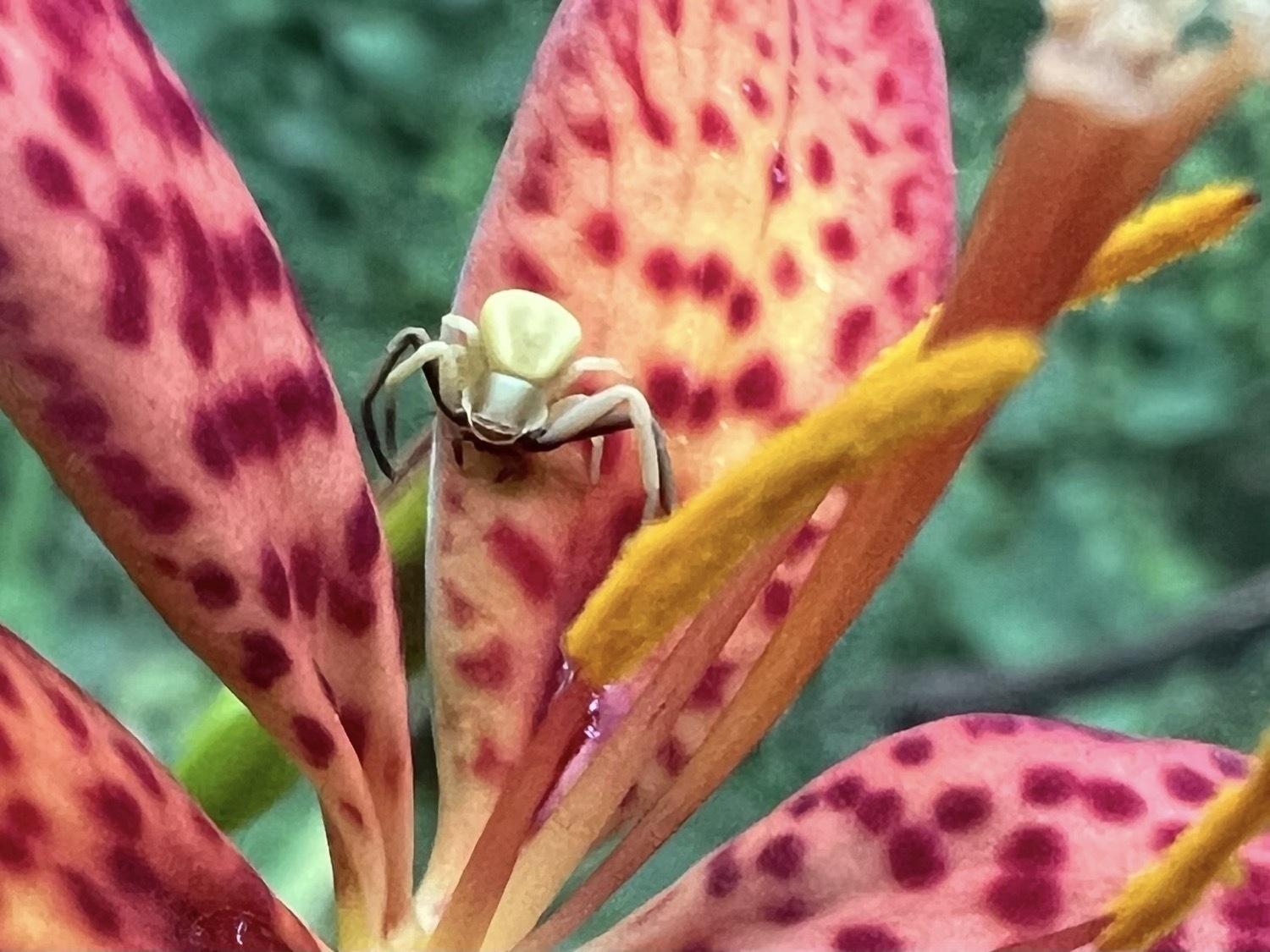
Tiny Life Journal - I've been seeing a lot of smallflower desert-chicory mixed into the various tall grasses. It's such a pretty flower to visit! Soundtrack: Northern Cardinal, Indigo Bunting and White-eyed Vireo.
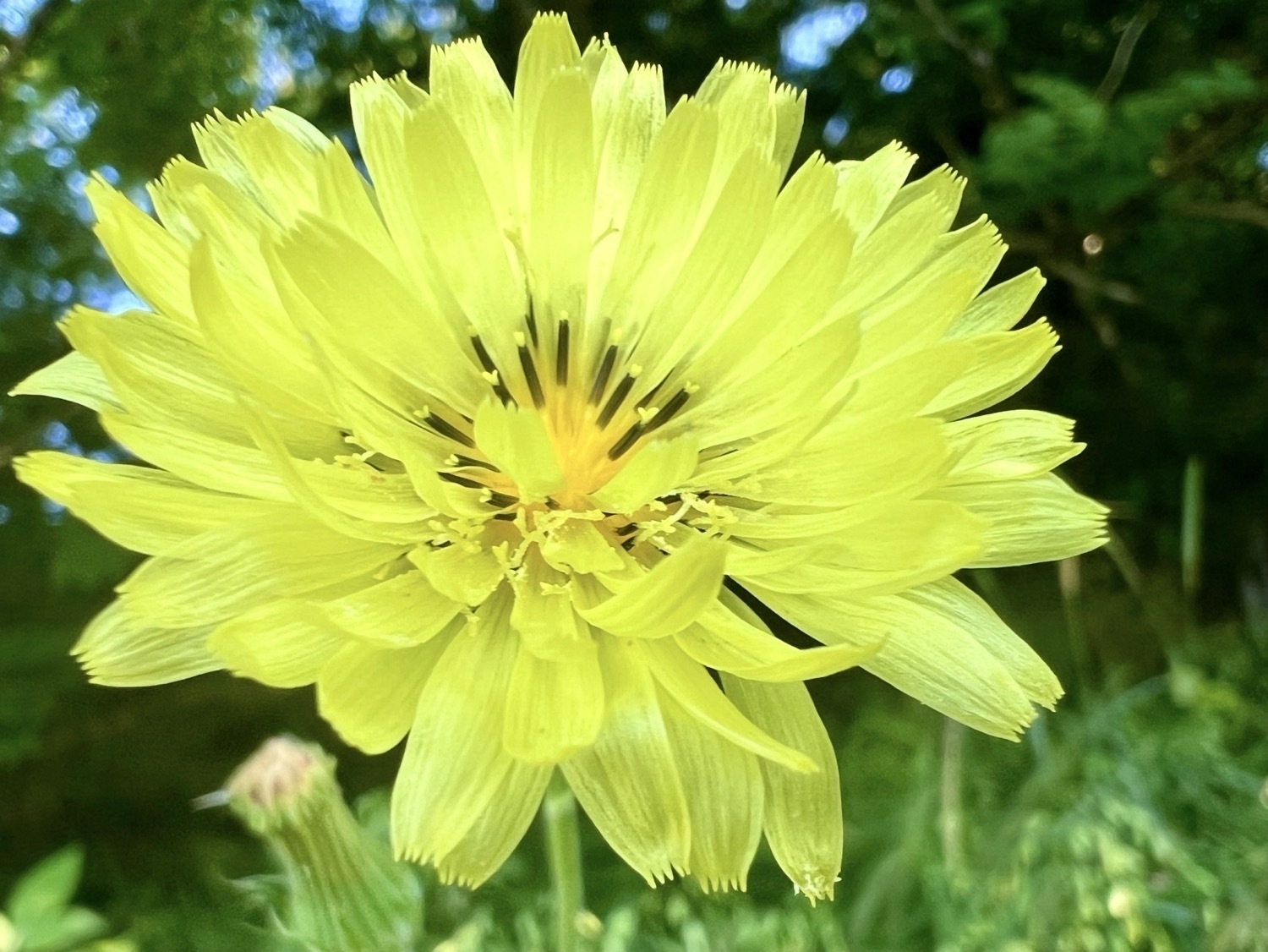
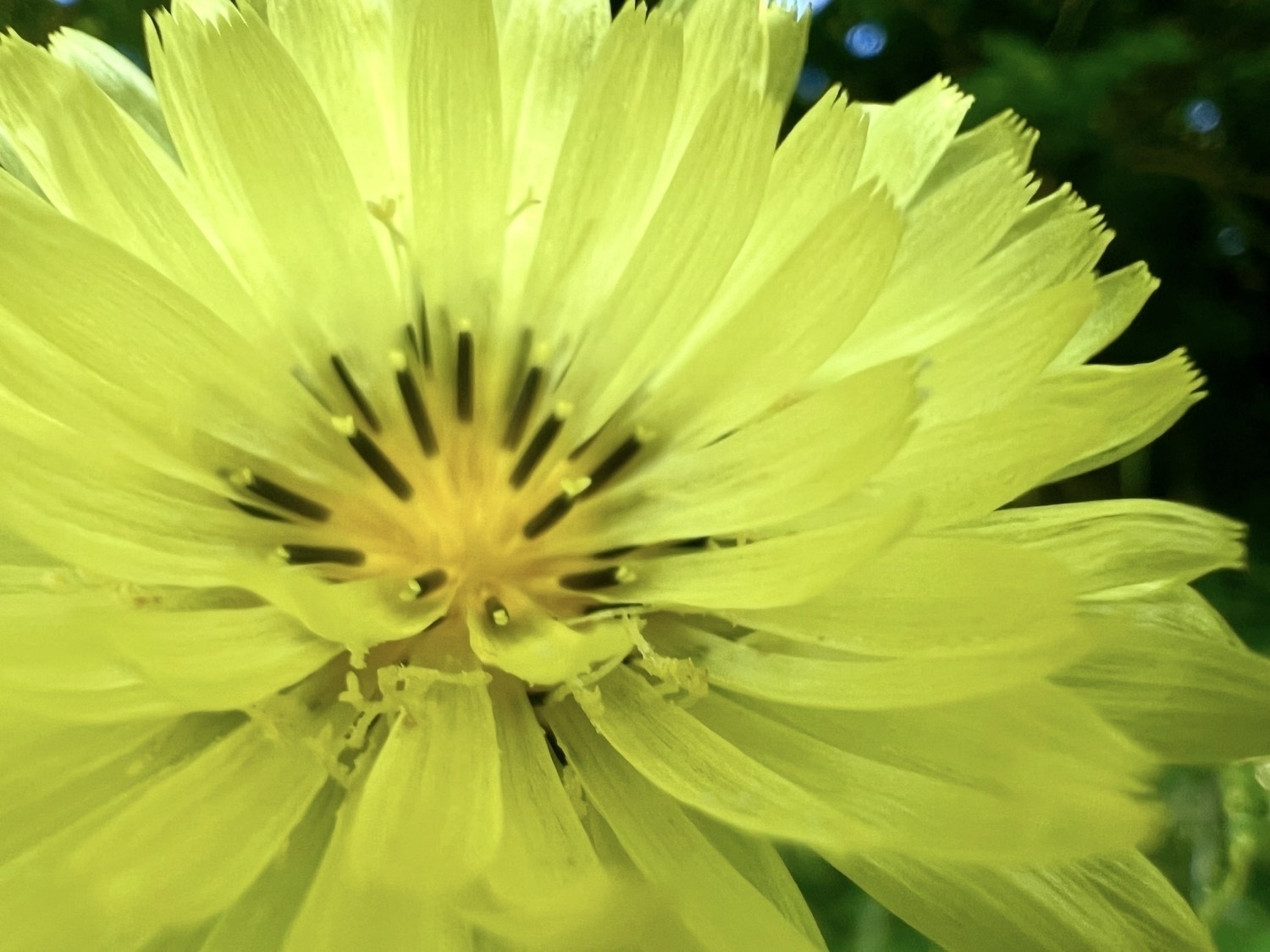

Tiny Life Journal - My morning walk with Cosmo was, as usual, a feast of birdsong and sun sparkling on dewy grass.

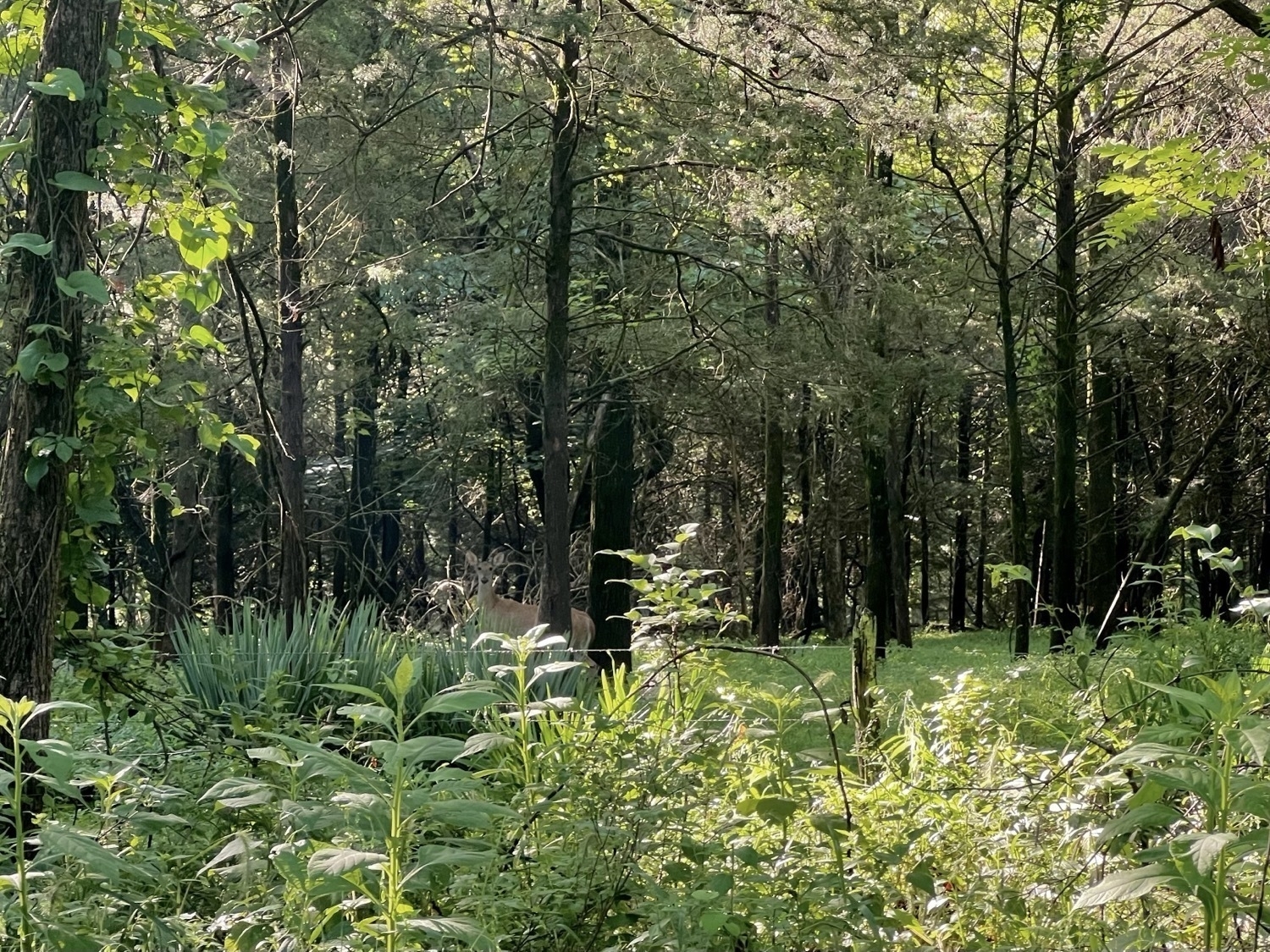
A few minutes later bike ride takes me past an opening in the understory of the woods lit by soft light over lush grass. I stopped to admire it and saw a friend in there.
Tiny Life Journal
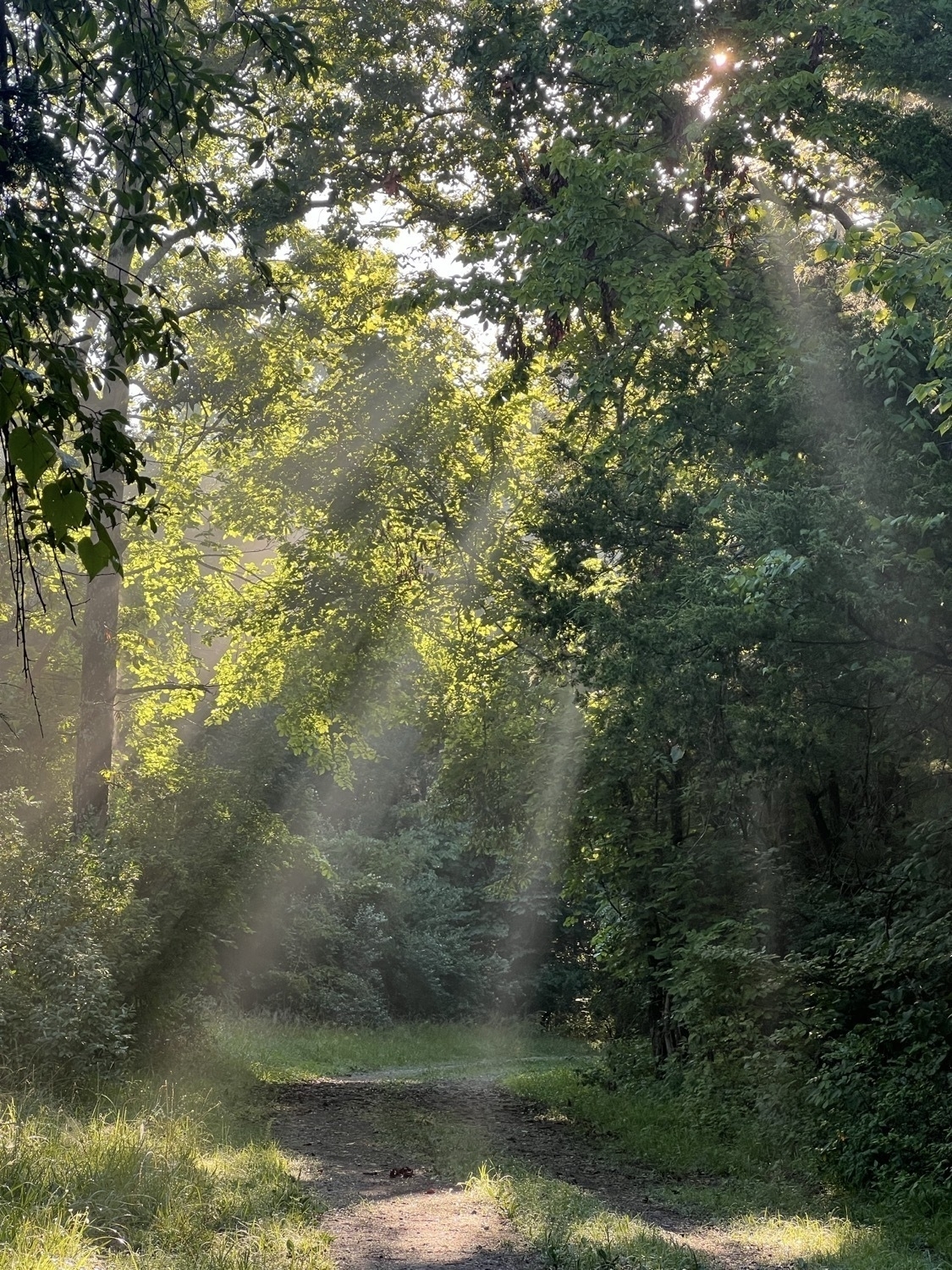
I've been pondering a change in what I post here. In the past year my tendency has been to post several times a day, usually links to recent climate or human rights news which I'll continue but to a lesser degree. I want to shift to more personal posts about aspects of living a simpler, climate adapted life. What does it mean to live with an intentional goal to draw down energy consumption? What does a low energy life look and feel like? I'm thinking I'll call it Tiny Life Journal. I could just as easily call it Slow Life Journal.
In a field of grass and wildflowers, Queen Anne's Lace and smallflower desert-chicory greet the sunrise.
